Do you already own the Sony a7R III? Or perhaps you are planning to buy one soon? Then you might be a little curious about which are the best E-mount lenses worth investing in.
The Sony a7R III is an full-frame E-mount camera for which there are many lenses available. I own quite a collection of E-mount lenses myself and have also read and watched far too many reviews, so I have a reasonable idea as to which lenses are worth adding to your gear collection and which ones you’ll want to leave alone.
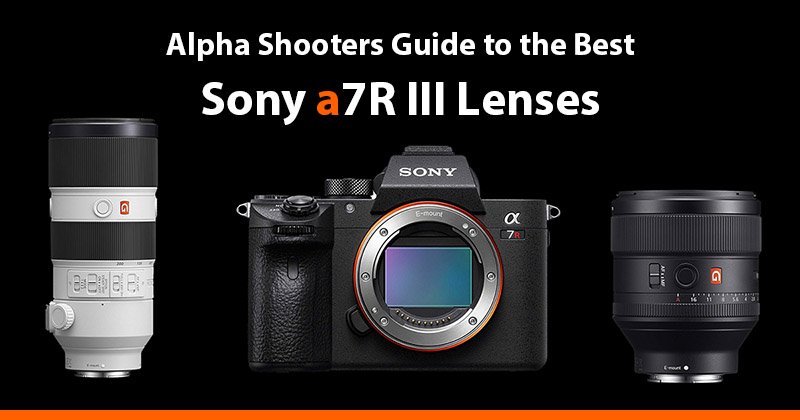
Although this guide is aimed at Sony a7R III shooters, these lenses are compatible with all Sony E-Mount full-frame or APS-C mirrorless cameras.
Sony A7R III Forum & Facebook Group
If you are looking for further help and advice on the A7R III or would simply like to share your photos, then please head over to our friendly full-frame Forum. If you prefer Facebook then I also run the Sony Alpha Shooters Group where you can ask questions or post your shots taken with the Sony a7R III.
Please note that this guide does not include every single E-mount lens, it’s just a selection of the most popular lenses based on use in the Alpha Shooters community. Visit my E-mount Lenses Guide for a complete list of lenses.
Contents
In order to help you find the best lens for your intended use, I’ve created the following sections. There is a little duplication between the groups but this should hopefully make it much easier for you to find the lens that you are looking for. You can click any of the below links to jump to the type of lens that you are most interested in.
- Top 10 Lenses
- Wide-Angle Lenses (12mm – 35mm)
- Zoom Lenses (24mm – 105mm)
- Portrait Lenses
- Macro Lenses
- Telephoto Lenses
- Street Photography Lenses
- Astrophotography Lenses
**Please Note: Unless otherwise mentioned no post processing has been applied to the image samples in this guide except for cropping. Full resolution SOOC JPEG images are available to download. RAW files are also available but password protected to help keep my hosting costs sensible. However, I do provide the username/password to all members of our community forum. All images are copyright protected and may be used for personal use only.
Top 10 Lenses
Here are my top 10 recommended lenses for the Sony a7R III.
- Sony FE 12-24mm F4 G (SEL1224G)
- Sony FE 16-35mm F2.8 GM (SEL1635GM)
- Sony FE 24mm F1.4 GM (SEL24F14GM)
- Sony FE 24-105mm F4 G OSS (SEL24105G)
- Tamron 28-75mm F2.8 Di III RXD
- Sony FE 85mm F1.4 G Master (SEL85F14GM)
- Sony FE 85mm F1.8 (SEL85F18)
- Sony FE 90mm F2.8 Macro G OSS (SEL90M28G)
- Sony FE F4.5-5.6 100-400mm G Master (SEL100400GM)
- Sony FE 400mm F2.8 GM OSS (SEL400F28GM)
Wide-Angle Lenses (12mm – 35mm)
A wide-angle lens generally refers to a lens that has 35mm focal length and wider on a full frame camera like the Sony a7R III, with 24mm and wider lenses often being referred to as ultra-wide-angle lens. These types of lenses allow more of the scene to be included in the frame. Both wide-angle and ultra-wide-angle lenses are popular choices with landscape, architectural and interior photographers.
Here are some of the best wide-angle and ultra-wide-angle lenses from 12mm to 35mm for the Sony a7R III and the Sony full-frame E-mount system of mirrorless cameras.
Sony FE 12-24 F2.8 GM (SEL1224GM)
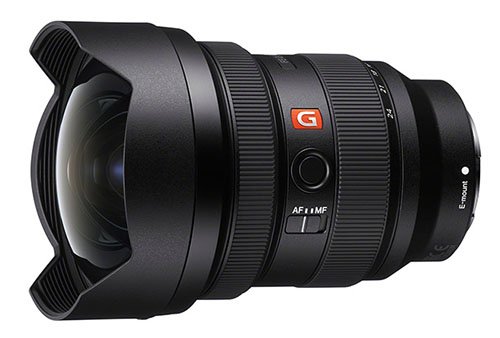
The Sony FE 12-24 F2.8 GM has not long been announced. As soon as reliable information about this lens is available this section will be updated.
If you’d like to learn more about the Sony FE 12-24 lens then this early review from Sony Ambassador Mark Galer is worth watching:
You can also find additional early reviews in my Sony 12-24 F2.8 GM announcement post.
Pros:
Cons:
Recommended Reviews:
Sample Photos: Sony Sample Gallery
Minimum Focusing Distance: 0.28 m (0.92 ft)
Minimum Aperture: f/22
Maximum Aperture: f/2.8
Aperture Blades: 9 circular
Angle of View (35mm): 122°–84°
Auto Focus: Yes
Stabilization: No
Filter Thread Size: No filter thread available.
Length: 137 mm
Diameter: 97.6 mm
Weight: 847 g (29.9 oz)
Sony FE 12-24mm F4 G (SEL1224G) Lens

The 12-24mm lens is an excellent ultra-wide-angle lens and the widest that Sony currently offers. It focuses and zooms internally so doesn’t grow in size and the autofocus is extremely fast.
Build quality is excellent and it weighs just 565 g, which is 47 g more than the popular Sony 16-35 f/4 FE lens. The lens has very impressive corner sharpness even when wide-open at f/4, there’s minimal distortion and almost no COMA for night photography. However with a widest aperture of f/4 the 16-35 F2.8 GM lens or the 24mm F1.4 GM lens are more likely to be the first choice for astro shooters.
Unfortunately like many ultra-wide lenses, the Sony 12-24 has a bulbous glass front element, meaning that it protrudes from the front of the lens. This makes it difficult to attach filters and there is no filter thread. However, thankfully there are now several companies making filter holders for this lens.
The 12-24 Sony lens is not a G-Master, but with the performance that is delivers it really should be. This is most definitely a lens that I would like to own myself.
Pros: Excellent central sharpness, low chromatic aberration, fast and accurate autofocus, great build quality
Cons: f/4 maximum aperture, high price, requires special filter holder
Recommended Reviews: Colby Brown
Sample Photos: Flickr
Minimum Focusing Distance: 0.28 m (0.92 ft)
Minimum Aperture: f/22
Maximum Aperture: f/4
Aperture Blades: 7 circular
Auto Focus: Yes
Stabilization: No (But you can use IBIS on the a7R III)
Filter Thread Size: N/A. Requires Special 12-24 Filter Holder.
Length: 117.4 mm
Diameter: 87 mm
Weight: 565 g (1.25 lbs)
Sigma 14-24mm f/2.8 DG DN Art

The Sigma 14-24mm f/2.8 DG DN Art lens has been designed exclusively for mirrorless cameras instead of being adapted from their SLR lenses.
The build quality is excellent and the lens is weather sealed, there’s also an integrated rear holder for gel filters, unfortunately there is no filter thread for conventional filters although NiSi do make an adapter (B&H Photo | Adorama).
At f/2.8 and 14mm both the center of the frame and corners are extremely sharp and remain sharp through f/11. At 24mm it’s a similar story with excellent central sharpness with the corners being just a little softer at f/2.8 but these sharpen up at f/4.
There is some barrel distortion and vignetting at 14mm and f/2.8 but this improves by f/5.6, and at 24mm there is a little pin-cushion distortion. However, for JPEG shooters if you have in-camera corrections turned on this will be fixed for you.
This review from Christopher Frost is well worth taking the time to watch:
Pros: Great build quality, sharpness across the frame, low coma and vignette
Cons: No traditional filters
Recommended Reviews: Dustin Abbott | Dustin Abbott (YouTube)
Sample Photos: Sigma | Flickr
Lens Construction: 18 elements in 13 groups
Angle of View (35mm): 114.2-84.1°
Aperture Blades: 11 rounded
Minimum Aperture: f/22
Maximum Aperture: f/2.8
Minimum Focusing Distance: 28cm / 11 in.
Maximum Magnification Ratio: 1:7.3
Auto Focus: Yes
Stabilization: No
Filter Thread Size: N/A (The lens comes with a rear filter holder for attaching sheet type rear filters)
Length: 131mm / 5.2 in.
Diameter: 85mm / 3.3 in.
Weight: 795g / 28.0oz.
Website: Sigma 14-24mm f/2.8 DG DN Art
ZEISS Batis 2.8/18 Lens

The Zeiss Batis 18mm f/2.8 has very few competitors for the price. It’s a very lightweight lens that has been built to Zeiss’s very high standards and this really shows. Optically it’s an exceptional lens. There is a little distortion and vignette, but this is easy to correct in post. Extreme corners aren’t quite as sharp as the center but they are sharp enough.
The autofocus is fast and quiet and the lens is also weather sealed to help keep dust and moisture out. There is an infinite scroll focus ring for when you want to focus the lens manually, and also an innovative OLED display that shows the distance and depth of field to ensure the focusing range can always be perfectly set.
Coma performance is also very good even wide open at f/2.8. However vignetting is pretty heavy which may impact astro shots.
Pros: Great build quality, weather sealed, fast and quiet autofocus, excellent sharpness across the frame, chromatic aberrations well controlled
Cons: Moderate distortion, strong vignette at wide apertures, expensive
Recommended Reviews: Drew Robinson
Sample Photos: Flickr
Minimum Focusing Distance: 0.25 m (0.82 ft)
Minimum Aperture: f/22
Maximum Aperture: f/2.8
Aperture Blades: 9 circular
Auto Focus: Yes
Stabilization: No (But you can use IBIS on the a7R III)
Filter Thread Size: 77 mm
Length: 95 mm with lens cap, 80 mm without lens cap
Diameter: 100 mm
Weight: 330 g (0.74 lbs)
Sony FE 20mm F1.8 G (SEL20F18G)
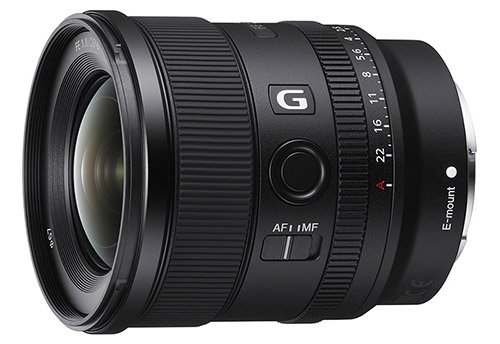
The Sony FE 20mm F1.8 G is well built, compact and weighs next to nothing at only 373g (13.2oz). It’s also weather sealed, has a customizable function button and a de-clickable aperture ring.
It features Sony’s newest XD linear focus motor that can be found in much more expensive telephotos lenses, this is both fast and virtually silent.
Distortion is very well controlled even with in-camera corrections turned off. There is a little vignetting at f/1.8 but this is gone by f/2.8. Chromatic aberrations are well controlled along with flaring.
The focus ring is silky smooth with a throw of around 160 degrees, however it does suffer from focus breathing most likely due to its very close focusing distance of just 0.59 ft / 0.18 m when focusing manually.
DPReview are calling this a “near-perfect lens”.
Here’s an excellent early review from Gerald Undone:
Pros: Size, sharpness, autofocus, distortion
Cons: Price
Recommended Reviews: Gerald Undone (YouTube) | Albert Dros (Sony Ambassador)
Sample Photos: DPReview
Minimum Focusing Distance: 0.63 ft (AF), 0.59 ft (MF) (0.19 m [AF], 0.18 m [MF])
Minimum Aperture: f/22
Maximum Aperture: f/1.8
Aperture Blades: 9 circular
Auto Focus: Yes
Stabilization: No
Filter Thread Size: 67 mm
Length: 3-3/8 in (84.7mm)
Diameter: 3 in (73.5mm)
Weight: 13.2 oz (373 g)
Sony FE 24mm F1.4 GM (SEL24F14GM) Lens
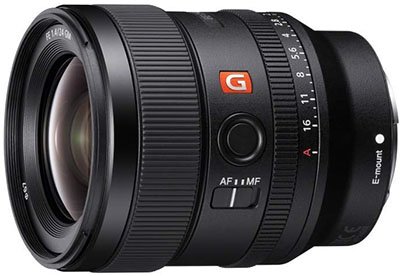
By creating the Sony FE 24mm F1.4 GM lens Sony has proven that you can build an excellent lens into a very small package. The lens is extremely well built, weather sealed against dust and moisture and weighs in at only 445 g. On the lens itself you will find a focus hold button that can be customized, an AF on/off switch, an aperture selection ring and a click on/off switch for the aperture ring.
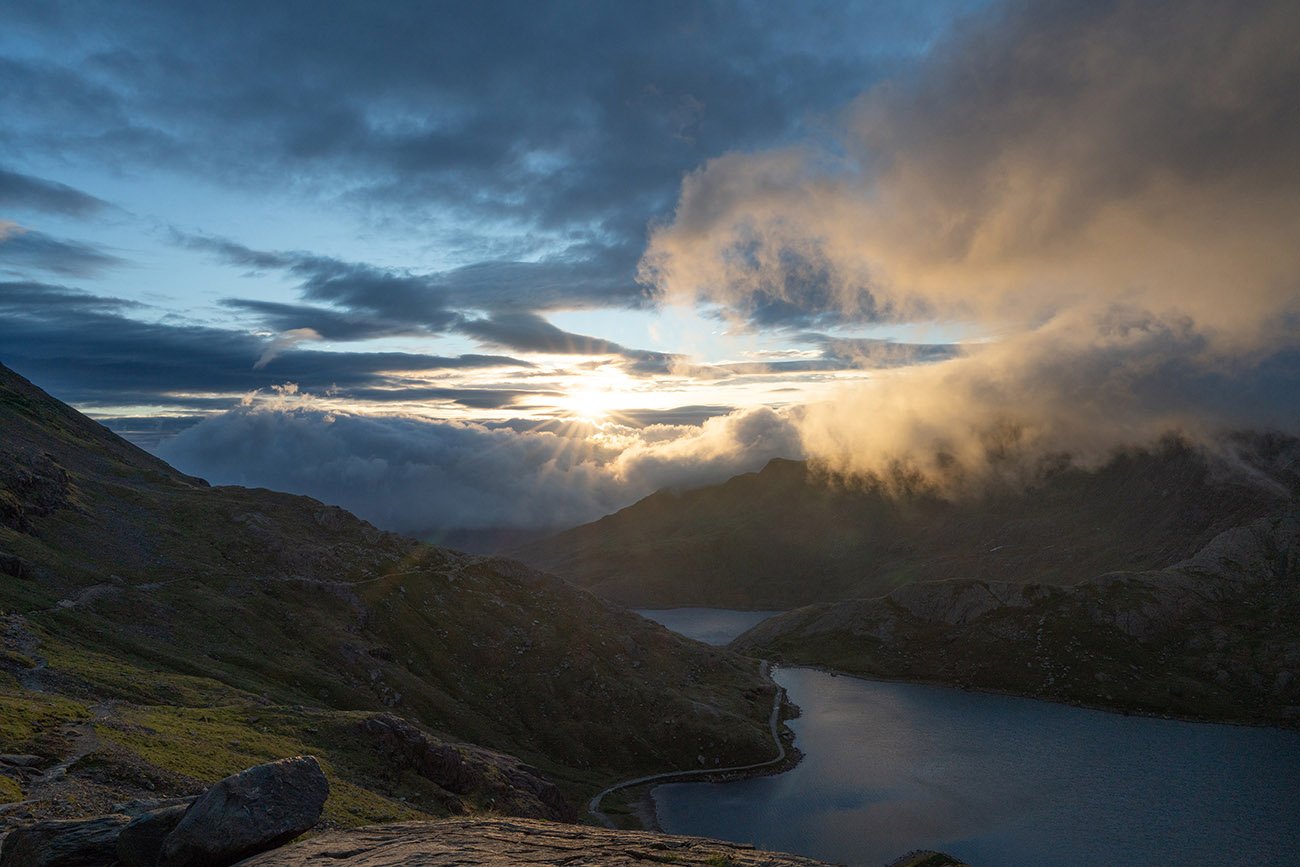
a7R III + 24mm F1.4 GM @ 1/200 | f/16 | ISO 320 | Shadows recovered in LR | ** Full Resolution SOOC Download: JPEG | RAW

a7R III + 24mm F1.4 GM @ 1/100 | f/1.4 | ISO 100 | ** Full Resolution SOOC Download: JPEG | RAW
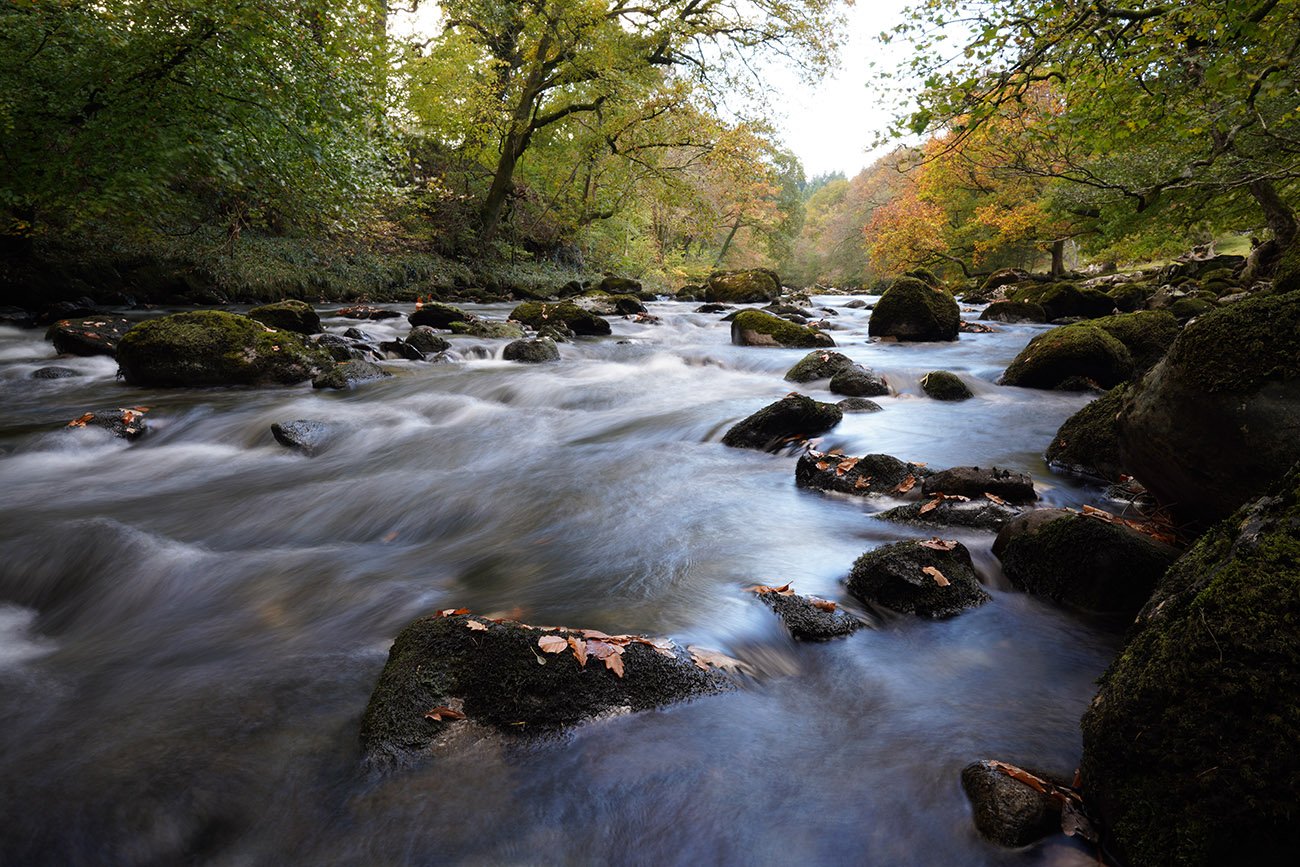
a7R III + 24mm F1.4 GM @ 1.3 sec | f/16 | ISO 100 | ** Full Resolution SOOC Download: JPEG | RAW
This lens is extremely sharp across the frame even when wide open at its maximum aperture of f/1.4. Distortion is well controlled as is the coma making this a great lens for astro photography. The bokeh is silky smooth and possibly the best of all the current 24mm f/1.4 lenses available. Autofocus is fast, quiet and super accurate. I own this lens myself and absolutely love it. I’ll be writing a review for it just as soon as I get a little free time.
Pros: Very sharp across the frame wide open, beautiful bokeh, size & weight, aperture ring, fast autofocus
Cons: Strong vignetting wide open, flare resistance
Recommended Reviews: Phillip Reeve
Sample Photos: Flickr
Minimum Focusing Distance: 0.24 m (0.79 ft)
Minimum Aperture: f/16
Maximum Aperture: f/1.4
Aperture Blades: 11 circular
Auto Focus: Yes
Stabilization: No (But you can use IBIS on the a7R III)
Filter Thread Size: 67 mm
Length: 92.4 mm with lens cap
Diameter: 75.4 mm
Weight: 445 g (0.98 lbs)
Sony FE 16-35mm F2.8 GM (SEL1635GM) Lens
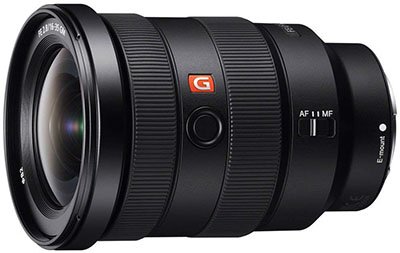
If you are looking for the best possible wide-angle zoom lens then you don’t need to look any further than the Sony FE 16-35mm f/2.8 GM. This certainly isn’t a lightweight lens though, as it weighs in at a hefty 680g.
Thankfully the build quality is excellent and it’s weather sealed against dust and moisture. The 11 circular aperture blades delivers ultra-smooth bokeh, focusing is fast and silent, and the sharpness is excellent across the frame. I own this lens myself and it very rarely leaves my gear bag.
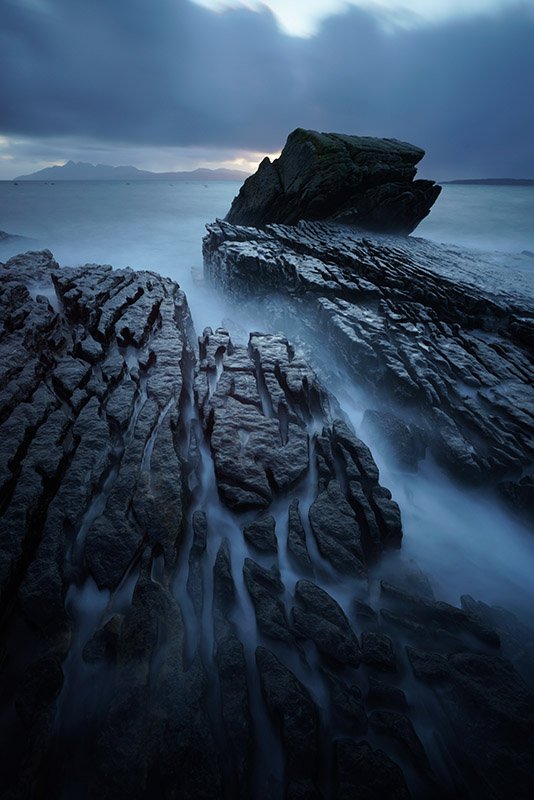
a7R II + FE 16-35mm F2.8 GM @ 30sec | f/6.3 | ISO 400 | ** Full Resolution SOOC Download: JPEG | RAW
Pros: Excellent sharpness across the frame, beautiful sunstars, very little coma and distortion, well controlled chromatic aberration
Cons: Weight, price
Recommended Reviews: Our Review
Sample Photos: Flickr
Minimum Focusing Distance: 0.28 m (0.92 ft)
Minimum Aperture: f/22
Maximum Aperture: f/2.8
Aperture Blades: 11 circular
Auto Focus: Yes
Stabilization: No (But you can use IBIS on the a7R III)
Filter Thread Size: 82 mm
Length: 121.6 mm
Diameter: 88.5 mm
Weight: 680 g (1.50 lbs)
Sony Vario-Tessar T* FE 16-35mm F4 ZA OSS (SEL1635Z) Lens
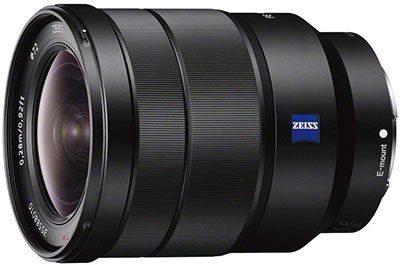
If the price of the Sony FE 16-35mm F2.8 GM lens makes your eyes water, then the Sony Vario-Tessar T* FE 16-35mm F4 ZA lens is a little more budget friendly. Although not quite as sharp as the GM lens and with a maximum aperture of only f/4, this Zeiss lens is still one of the most popular lenses for landscape photographers. Both smaller in size and lighter than the GM (it weighs only 518g), this is an excellent lens for when you are backpacking and every extra gram counts.
The images it produces have excellent color, contrast and impressive sharpness across the frame. Sadly the lens is not weather sealed like its larger GM brother, so you need to be a little more careful when the rain comes down. I also own this lens myself although it is collecting dust since I picked up the GM version.
Pros: Very good sharpness across the frame and zoom range, built in stabilization, well built, fast and accurate autofocus
Cons: Flare resistance, not weather sealed
Recommended Reviews: Jordan Steele
Sample Photos: Flickr
Minimum Focusing Distance: 0.28 m (0.92ft)
Minimum Aperture: f/22
Maximum Aperture: f/4
Aperture Blades: 7 circular
Auto Focus: Yes
Stabilization: Yes
Filter Thread Size: 72 mm
Length: 98.5 mm
Diameter: 78 mm
Weight: 518 g (1.14 lbs)
Tamron 17-28mm F2.8 Di III RXD (A046) Lens

After Tamron’s success with their 28-75mm F2.8 Di III RXD lens they now bring us a wilder alternative in the Tamron 17-28mm F2.8 Di III RXD. Similar to the 28-75mm this lens offers great sharpness wide-open in a compact lightweight body and at a very reasonable price point.
Pros: Very good sharpness across the frame at 17mm and f/2.8, coma performance, flare resistance, size/weight
Cons: Color cast in the corners, distortion
Recommended Reviews: Phillip Reeve | Chris Turner (YouTube)
Sample Photos: FlickR
Lens Construction: 13 elements in 11 groups
Angle of View: 103°41′-75°23′
Aperture Blades: 9 rounded
Minimum Aperture: f/22
Maximum Aperture: f/2.8
Minimum Focusing Distance: 0.19m (7.5 in) (WIDE) – 0.26m (10.2 in) (TELE)
Maximum Magnification Ratio: 1:5.2 (Wide) / 1:6 (Tele)
Auto Focus: Yes
Stabilization: No
Filter Thread Size: 67mm
Length: 99mm
Diameter: 73mm
Weight: 420g / 14.8 oz
Sony FE 35mm F1.8 (SEL35F18F) Lens

If you are looking for a small, compact and very light weight fast 35mm prime lens then you don’t need to look much further than the Sony FE 35mm F1.8.
Weighing in at only 280g (9.9 oz) you’ll have to check your a7R III to believe that you actually have a lens attached.
Despite its small size Sony have not held back when it comes to optical quality or autofocus performance. The autofocus motor is both fast and silent and the focus ring is very smooth.
At its maximum aperture of f/1.8 it has good sharpness across the frame, this improves at f/2 and is excellent when you hit f/2.8.
Bokeh at short to medium distances is very pleasing to the eye (although always subjective) and the lens displays minimal pin-cushion distortion. Unfortunately the lens is let down a little when it comes to vignetting, but with in-camera corrections turned on this will not be an issue.
If you would like to learn more about this lens then this review from Christopher Frost is definitely worth a watch:
Pros: Sharpness, size and weight, bokeh
Cons: Vignetting, price
Recommended Reviews: Dustin Abbott | Philip Reeve | Ryan Mense (YouTube)
Sample Photos: Sony | Flickr
Minimum Focusing Distance: 0.22 m (0.73 ft)
Minimum Aperture: f/22
Maximum Aperture: f/1.8
Aperture Blades: 9 circular
Auto Focus: Yes
Stabilization: No
Filter Thread Size: 55 mm
Length: 73 mm
Diameter: 65.6 mm
Weight: 280g (9.9 oz)
Zoom Lenses (24mm – 105mm)
Zoom lenses that cover a wider focal range can make great all-round lenses when you want to keep things light and simple and avoid carrying multiple lenses with you. Here are some of the best zoom lenses for the Sony a7R III from 24mm up to 105mm.
Sony FE 24-70mm F2.8 GM (SEL2470GM) Lens

The Sony FE 24-70mm F2.8 GM is one of the very few zoom lenses that can keep up optically with many of the best prime lenses. It’s extremely well built, weather sealed from dust and moisture, and the autofocus is fast and accurate. Sharpness is outstanding throughout the entire zoom range at all apertures and all focus distances, however the corners are a little softer when wide open. Whether shooting landscapes, events or any other type of shooting, this lens will handle pretty much everything that you can possibly throw at it.
Pros: Excellent center sharpness even when wide open, vignetting, build quality, fast and accurate autofocus, bokeh, chromatic aberration
Cons: Flare resistance, sharpness wide open, size, price
Recommended Reviews: Jordan Steele | Jannik Peters
Sample Photos: Flickr
Minimum Focusing Distance: 0.38 m (1.24 ft)
Minimum Aperture: f/22
Maximum Aperture: f/2.8
Aperture Blades: 9 circular
Auto Focus: Yes
Stabilization: No (But you can use IBIS on the a7R III)
Filter Thread Size: 82 mm
Length: 136 mm
Diameter: 87.6 mm
Weight: 886 g (1.95 lbs)
Sony 24-70mm F4 Vario-Tessar T* FE ZA OSS (SEL2470Z) Lens

If the Sony 24-70mm F2.8 GM is out of budget or simply far too large and heavy for your style of photography, then the Sony 24-70mm F4 Vario-Tessar T* FE ZA OSS lens may be what you are looking for. The lens is very well built and weighs in at only 426 g which is half the weight of the GM version!
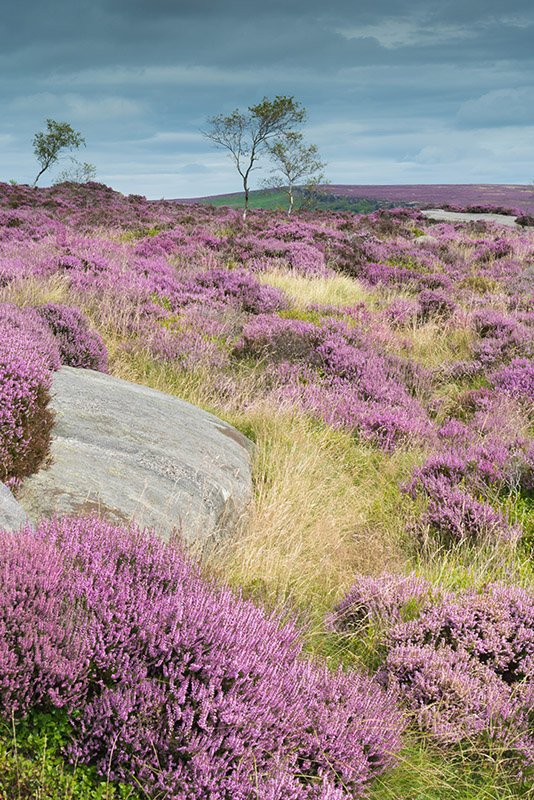
a7R II + FE 24-70mm F4 @ 60mm | 1/40 | f/16 | ISO 100 | ** Full Resolution SOOC Download: JPEG
This is one of the Sony lenses that receives mixed reviews. Some people love it whilst others don’t rate is so favorably. I own this lens myself and although it’s certainly not as sharp as the GM version, the images it produces are sharp enough unless you really enjoy a good pixel peeping session.
However, I am very tempted to sell it so that I can afford the Tamron 28-75mm F2.8 Di III RXD lens. So my recommendation would be to buy the Tamron if you don’t want to spend the money on the GM 24-70 lens.
Pros: Vignetting, chromatic aberrations and distortion are all well-controlled
Cons: Corners are soft at 24mm and 70mm
Recommended Reviews: Nomadic Pursuits
Sample Photos: Flickr
Minimum Focusing Distance: 0.4 m (1.32 ft)
Minimum Aperture: f/22
Maximum Aperture: f/4
Aperture Blades: 7 circular
Auto Focus: Yes
Stabilization: Yes
Filter Thread Size: 67 mm
Length: 94.5 mm
Diameter: 73 mm
Weight: 426 g (0.94 lbs)
Sony FE 24-105mm F4 G OSS (SEL24105G) Lens

The Sony FE 24-105mm f/4 G OSS lens is an extremely versatile lens that covers a very useful focus area. This is one of the best if not the best 24-105 zoom lens on the market today.
The lens is sharp from 24mm all the way up to 105mm even when you are shooting wide open at f/4. If you like MTF charts then Roger Cicala has some over at LensRentals.com. Sony has really gone to town on this lens and it certainly shows. I don’t own this lens myself, but if I had money to burn I would certainly pick one up.
Pros: Covers a useful focal range with excellent sharpness across the frame, chromatic aberrations and flare well controlled, quiet and fast autofocus
Cons: Expensive
Recommended Reviews: Dustin Abbott | Lens Rentals
Sample Photos: Flickr
Minimum Focusing Distance: 0.38 m (1.25 ft)
Minimum Aperture: f/22
Maximum Aperture: f/4
Aperture Blades: 9 circular
Auto Focus: Yes
Stabilization: Yes
Filter Thread Size: 77mm
Length: 113.3 mm
Diameter: 83.4 mm
Weight: 663 g (1.46 lbs)
Tamron 28-75mm F2.8 Di III RXD Lens
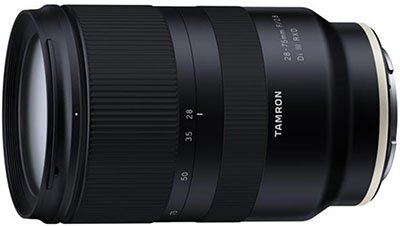
When Tamron launched their 28-75mm F2.8 Di III RXD for Sony E-mount they really hit a home run. This lens has been sold out everywhere since launch and it’s really not suprising since it offers excellent sharpness and autofocus performance in a compact and lightweight body. There is very little in the way of chromatic aberrations to worry about and the lens is sharp across the frame even when wide open at f/2.8.
The image quality of this lens is incredibly close to the Sony FE 24-70 F2.8 G Master lens, which is mind blowing considering the G Master costs double the price! This is Tamron’s first native lens for Sony E-mount and I most definitely hope that it’s the first of many. I don’t own this lens but would certainly like to.
Pros: Excellent sharpness even wide open, lovely sunstars, smooth bokeh, lightweight, cost
Cons: Distortion, vignetting
Recommended Reviews: Albert Dros | Jannik Peters
Sample Photos: Flickr
Minimum Focusing Distance: 0.19 m (0.62 ft)
Minimum Aperture: f/22
Maximum Aperture: f/2.8
Aperture Blades: 9 circular
Auto Focus: Yes
Stabilization: No (But you can use IBIS on the a7R III)
Filter Thread Size: 67 mm
Length: 117.8 mm
Diameter: 73 mm
Weight: 550 g (1.21 lbs)
Portrait Lenses
Traditionally, the term ‘portrait lens’ has been used to describe lenses in the 85mm to 135mm range, but you can more or less use any lens that you like to shoot portraits with. The decision is likely to come down to your own personal style of photography.
That said, although you can certainly shoot great portraits with a zoom lens, prime lenses are often the preferred choice since they will have a wider maximum aperture which is great for isolating your subject and producing a lovely creamy bokeh. Prime lenses are normally sharper than zoom lenses too and also a lot lighter making handling them a lot more enjoyable.
Here are some of the best portrait lenses for the Sony a7R III and the Sony full-frame E-mount system of mirrorless cameras.
Sony FE 85mm F1.4 G Master (SEL85F14GM) Lens

The Sony FE 85mm F1.4 G Master is an exceptional lens and one which every portrait photographer should own if they don’t already. Sharpness across the frame is already excellent from f/1.4, flare resistance is very good, as is control of chromatic aberration. The build quality is as good as it gets for a Sony lens and it is weather sealed against dust and moisture. It is really only the autofocus performance that lets this lens down a little, as its most definitely not the fastest. However, eye auto focus works well and unless your subject is moving very fast you shouldn’t have any issues with nailing razor sharp images.
To make this lens a reality Sony first had to spend 3-4 years building their own mold-making machine that would allow the creation of a lens that didn’t have the previously-characteristic ridges present that can lead to unsightly onion-ring bokeh balls. Well, Sony certainly nailed their mold as this lens has the smoothest and creamiest bokeh of any lens on the market today.
I don’t own this lens myself but would most definitely be purchasing one if I was a portrait photographer.
Pros: Sharpness across the frame, bokeh, flare resistance, build quality
Cons: Sunstars, slow autofocus
Recommended Reviews: Bastian Kratzke
Sample Photos: Flickr
Minimum Focusing Distance: 0.8 m (2.62 ft)
Minimum Aperture: f/16
Maximum Aperture: f/1.4
Aperture Blades: 11 circular
Auto Focus: Yes
Stabilization: No (But you can use IBIS on the a7R III)
Filter Thread Size: 77 mm
Length: 107.5 mm
Diameter: 89.5 mm
Weight: 820 g (1.80 lbs)
Sony FE 85mm F1.8 (SEL85F18) Lens
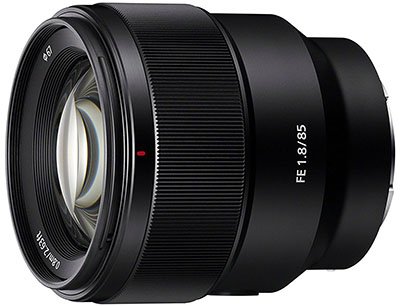
If the 85mm G Master is out of budget then you might want to look at the Sony FE 85mm F1.8 lens. This lens is not as large, heavy or as ridiculously sharp as its larger G Master brother, but it certainly does not disappoint.
What is surprising about this lens is that the autofocus is actually faster than the GM version. The bokeh isn’t quite as smooth as the GM, but it certainly comes very close. I own this lens myself and certainly have no plans to sell it anytime soon.

a7R III + FE 85mm F1.8 @ 1/200 | f/4 | ISO 100 | ** Full Resolution SOOC Download: JPEG | RAW

a7R III + FE 85mm F1.8 | @ 1/400 | f/1.8 | ISO 100 | Cropped | ** Full Resolution SOOC Download: JPEG | RAW

This lens is also perfect for pet portraits. Here’s a shot of my dog Frank at 9 weeks of age.
Sony FE 85mm F1.8 (Shot on a7III) @ 85mm | 1/1000 | f/1.8 | ISO 250 | ** Full Resolution SOOC Download: JPEG | RAW
If you can’t decide between the FE 85mm F1.8 and the FE 85mm F1.4 GM, then I recommend checking out this comparison video by Manny Ortiz.
Pros: Build quality, sharpness, bokeh, distortion, price
Cons: Purple fringing at large apertures, flare resistance
Recommended Reviews: Jannik Peters
Sample Photos: Flickr
Minimum Focusing Distance: 0.8 m (2.63 ft)
Minimum Aperture: f/22
Maximum Aperture: f/1.8
Aperture Blades: 9 circular
Auto Focus: Yes
Stabilization: No (But you can use IBIS on the a7R III)
Filter Thread Size: 67 mm
Length: 82 mm
Diameter: 78 mm
Weight: 371 g (0.82 lbs)
Sony FE 90mm F2.8 Macro G OSS (SEL90M28G) Lens
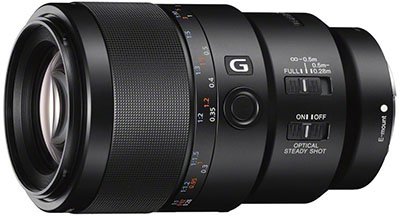
Despite being called a macro lens, the Sony FE 90mm f/2.8 Macro G OSS lens is also an excellent portrait lens and one of the sharpest lenses that Sony has ever built. DxOMark reviewed this lens and said that its outstanding, scoring higher marks than both the Canon and Nikon equivalents.
It is very hard to find fault with this lens but if I’m being very picky then AF performance could be faster and the manual focus ring adjustments could be finer for more precision, but for shooting portraits you probably won’t care too much about manual focusing. This lens also has optical stabilization built in.
For shooting portraits this lens is ridiculously sharp. So if you don’t want to show every spot, blemish and wrinkle on your model this lens probably shouldn’t be your first choice for portrait work.
If you are looking for a dedicated macro lens, or a lens that can combine both macro and portrait photography roles, then look no further than the 90mm F2.8 Macro G OSS lens. I own this lens myself and love using it for macro work.
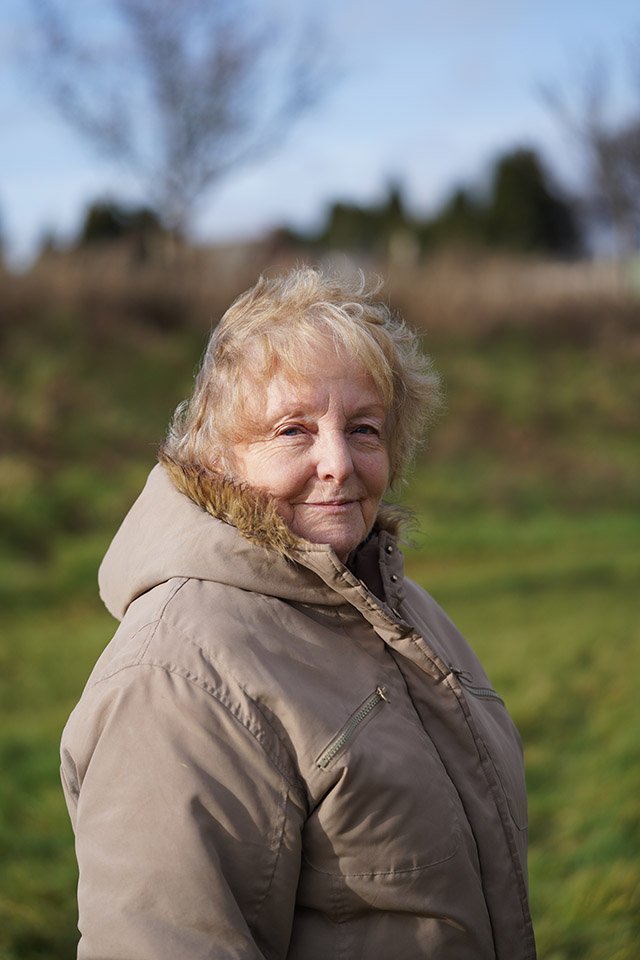
a7 III + 90mm F2.8 G Macro @ 1/1600 | f/2.8 | ISO 160 | ** Full Resolution SOOC Download: JPEG | RAW

a7 III + 90mm F2.8 G Macro @ 1/1600 | f/2.8 | ISO 250 | ** Full Resolution SOOC Download: JPEG | RAW
Pros: Incredible sharpness at all apertures, excellent color rendition, CA is well controlled, very well built, price
Cons: Autofocus isn’t the fastest, manual focus could allow for finer adjustments
Recommended Reviews: Miguel Quiles (YouTube) | Jordan Steele | DxOMark | Michael Comeau
Sample Photos: Flickr
Minimum Focusing Distance: 0.28 m (0.92 ft)
Minimum Aperture: f/22
Maximum Aperture: f/2.8
Aperture Blades: 9 circular
Auto Focus: Yes
Stabilization: Yes
Filter Thread Size: 62 mm
Length: 130.5 mm
Diameter: 79 mm
Weight: 602g (1.33 lbs)
Sony FE 100mm F2.8 STF GM OSS (SEL100F28GM) Lens
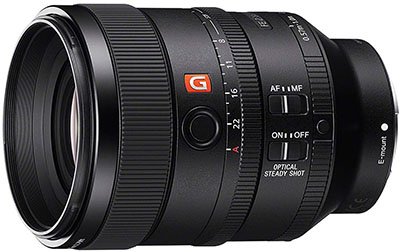
The Sony FE 100mm F2.8 STF GM OSS lens is a very unique lens in the Sony FE lenses line-up since it includes a built in apodization (APD) filter. This is a clear glass filter that progressively darkens similar to a neutral density filter as you get further away from the center of the lens.
The effect of the ADP filter is at its greatest when wide open at F2.8 (T.5.6). As well as limiting the light coming in, the filter also makes bokeh balls darker towards their outer edge as well as softens it. While the aperture is stated as F2.8, the depth of field is similar to an F4 lens.
The build quality like with all GM lenses is excellent, as is the sharpness and lovely smooth bokeh. It really is a lens with its own unique style, and for exactly this reason there are many portrait photographers who love shooting with this lens.
Pros: Excellent sharpness, bokeh, build quality, image stabilization
Cons: Weight, poor light transmission, size
Recommended Reviews: Rose and Charles | Stephen Ozcomert
Sample Photos: Flickr
Minimum Focusing Distance: 0.85 m (2.79 ft) at “0.85m-∞” position; 0.57 m (1.87 ft) at “0.57m-1.0m” position
Minimum Aperture: f/20 (T22)
Maximum Aperture: f/2.8 (T5.6)
Aperture Blades: 11 circular
Auto Focus: Yes
Stabilization: Yes
Filter Thread Size: 72 mm
Length: 118.1 mm
Diameter: 85.2 mm
Weight: 700g (1.54 lbs)
Sigma 105mm f/1.4 DG HSM Art Lens

The Sigma 105mm f/1.4 DG HSM Art Lens for Sony full-frame E-mount is an exceptionally sharp lens even when shooting wide-open at f/1.4. Autofocus works almost as fast as Sony native lenses in good lighting, but in poor light autofocus starts to struggle a little more. There is very little in the way of vignetting and almost nonexistent chromatic aberrations.
However, despite its positives you can’t really overlook the fact that this lens weighs a massive 1645g and will make your a7III look tiny, but once you see the images that this bokeh beast is capable of creating you’ll soon forget about the size and weight issue. If I had money to burn I would certainly add this lens to my gear bag despite not shooting many portraits myself.
Pros: Exceptionally sharp wide-open, build quality, CA control, creamy bokeh
Cons: Large and heavy, filter size, autofocus speed
Recommended Reviews: Manny Ortiz (YouTube)
Sample Photos: Flickr
Lens Construction: 17 elements in 12 groups
Minimum Focusing Distance: 100cm (39.4 in)
Minimum Aperture: f/16
Maximum Aperture: f/1.4
Aperture Blades: 9 rounded
Auto Focus: Yes
Stabilization: No (But you can use IBIS on the a7 III)
Filter Thread Size: 105 mm
Length: 131.5 mm
Diameter: 115 mm
Weight: 1645g (3.62 lbs)
Price Check & Buyer Reviews for Sigma 105mm F1.4 DG HSM Art
At: Amazon | B&H Photo
Sony FE 135mm F1.8 GM (SEL135F18GM) Lens

The Sony FE 135mm F1.8 GM lens is due for release in April. Roger Cicala from LensRentals.com has tested the new Sony FE 135mm F1.8 GM lens and said: “This is the sharpest lens we’ve tested. Period. (At last count, that’s out of 300+ lenses tested.) Which is really very high praise indeed!
Pros: Excellent sharpness, bokeh, build quality
Cons: Price
Recommended Reviews: LensRentals.com | Manny Ortiz (YouTube) | Miguel Quiles (YouTube)
Sample Photos: DPReview
Minimum Focusing Distance: 0.7 m (2.3 ft)
Minimum Aperture: f/22
Maximum Aperture: f/1.8
Aperture Blades: 11 circular
Auto Focus: Yes
Stabilization: No
Filter Thread Size: 82mm
Length: 127 mm (5 in.)
Diameter: 89.5 mm (3-5/8 in.)
Weight: 950 g (33.6 oz.)
Macro Lenses
Macro lenses are often used to take photos of things close up like bugs, food, or generally anything that you would like to blow up really big to see as much detail as possible. A macro lens should have the ability to focus from infinity to 1:1 magnification at the closest focusing distance, this means that the size of the image in real life is the same size as it is reproduced on the sensor of your camera.
When choosing a macro lens the two most important figures that you should be looking at are the magnification ration and the minimum focusing distance. Ideally you will want a magnification ration of 1:1, and the longer the minimum focusing distance (working distance) the better since it allows you to put more working space between your lens and your subject.
You might think that a smaller minimum focusing distance would be better since it allows you to get closer to your subject. However, if you get too close your lens will block light from reaching your subject and may also cast a shadow on it, and if your subject is alive it may well fly away before you have chance to focus and hit the shutter button.
Here are some of the best macro lenses for the Sony a7R III and the Sony full-frame E-mount system of mirrorless cameras:
Sony FE 90mm F2.8 Macro G OSS (SEL90M28G) Lens

The Sony FE 90mm f/2.8 Macro G OSS lens is one of the sharpest lenses that Sony has ever built. DxOMark reviewed this lens and said that it’s outstanding, scoring higher marks than both the Canon and Nikon equivalents.
It is very hard to find fault with this lens but if I’m being very picky then AF performance could be faster and the manual focus ring adjustments could be finer for more precision. That said, for macro work I’ll normally adjust the focus by moving the camera back and forth and whilst making use of focus peaking to let me know when the focus is where I’d like it to be. This lens also has optical stabilization built in, making it even easier to get tack sharp images with slower shutter speeds.
If you are looking for a dedicated macro lens, or a lens that can combine both macro and portrait photography roles, then look no further than the 90mm F2.8 Macro G OSS lens. I own this lens myself and have no plans to let it go anytime soon.

Sony FE 90mm F2.8 Macro (Shot on a7R III) @ 1/500 | f/2.8 | ISO 320 | Cropped | ** Full Resolution SOOC Download: JPEG | RAW
Pros: Incredible sharpness at all apertures, excellent color rendition, CA is well controlled, very well built, price
Cons: Autofocus isn’t the fastest, manual focus could allow for finer adjustments
Recommended Reviews: Jordan Steele | DxOMark | Philip Reeve
Sample Photos: Flickr
Minimum Focusing Distance: 0.28 m (0.92 ft)
Minimum Aperture: f/22
Maximum Aperture: f/2.8
Aperture Blades: 9 circular
Auto Focus: Yes
Stabilization: Yes
Filter Thread Size: 62 mm
Length: 130.5 mm
Diameter: 79 mm
Weight: 602g (1.33 lbs)
Sigma 70mm F2.8 DG Macro Art Lens

The Sigma 70mm F2.8 DG Macro lens for Sony E-mount (full-frame) is the first macro lens from Sigma that has been adapted to Sony E-mount. However, the word adapted here is very important since the E-mount version of this lens has been adapted from their Canon and Sigma versions that were originally designed for SLR cameras and not mirrorless. The additional adapter that is built onto the back of the lens body for the E-mount does add extra weight and length to the lens over its SLR equivalents.
Still, despite this lens being adapted from their SLR versions, it is a beautiful lens that costs almost half the price of the Sony FE 90mm F2.8 G OSS macro lens. The images that it produces are razor sharp across the frame, chromatic aberration is well controlled as is distortion. The bokeh is silky smooth and the lens feels like all Sigma Art lenses do, extremely well built!

a7R III + Sigma 70mm F2.8 Macro @ 1/1000 | f/5.6 | ISO 500 | Cropped | ** Full Resolution SOOC Download: JPEG | RAW
Autofocus on this lens is not the fastest, you certainly won’t be nailing sharp images of any bugs in flight. However, for macro work I’m using this lens in manual mode 99% of the time so I’m not worried about AF performance. The large focusing ring is extremely smooth and gives you a lot of precision when manually focusing, however this precision comes at a price, as the focus ring requires around 10 twists of the wrist to go from minimum to maximum distance.

a7III + Sigma 70mm F2.8 Macro @ 1/800 | f/4 | ISO 320 | Cropped | ** Full Resolution SOOC Download: JPEG | RAW
Unlike the Sony 90mm Macro, the Sigma does extend when you focus. However, it never extends further than the lens hood and has never been an issue for me personally. As it’s a 70mm lens with a working distance of 0.25m, you will need to get very close to your subject for 1:1 images, so there is always a risk of casting a shadow or scaring off your subject.
I own this lens myself and for the price you really can’t go wrong with it.
Pros: Extremely sharp, color rendition, chromatic aberration, build quality, price
Cons: Autofocus, manual focus ring
Recommended Reviews: My Review
Sample Photos: My Review
Maximum Magnification Ratio: 1:1
Minimum Focusing Distance: 0.25m (0.82ft)
Minimum Aperture: f/22
Maximum Aperture: f/2.8
Aperture Blades: 9 circular
Auto Focus: Yes
Stabilization: No (But you can use IBIS on the a7R III)
Filter Thread Size: 49 mm
Length: 130 mm (min) 181 mm (max)
Diameter: 70.8 mm
Weight: 622 g (1.37 lbs) with lens hood
Voigtlander 110mm f2.5 Macro Apo-Lanthar Lens
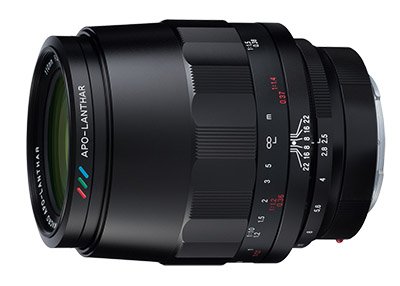
The Voigtlander 110mm F2.5 Macro APO Lanthar is an incredibly sharp macro lens that offers the Sony FE 90mm F2.8 G Macro lens a good run for its money. With a comfortable working distance of 17cm and superb build quality, this lens is most definitely on my wish list.
It is manual focus only, but I don’t expect this will be an issue for many macro shooters who prefer to shoot manual anyway. You can also make full use of the focus peaking on the a7R III to help find tune your focus.
Wide-open at f/2.5 and the lens is already incredibly sharp both centrally and even towards the edges of the frame. Bokeh is very smooth and free from onion rings, although you will see some cat’s eyes which don’t really improve as you step-down. CA is extremely well controlled.
Pros: Excellent sharpness, build quality, CA control, bokeh
Cons: Vignetting, Cat-eye bokeh balls
Recommended Reviews: Phillip Reeve | Fred Miranda
Sample Photos: Flickr
Maximum Magnification Ratio: 1:1
Minimum Focusing Distance: 0.17m (0.56ft)
Minimum Aperture: f/22
Maximum Aperture: f/2.5
Aperture Blades: 10
Auto Focus: No
Stabilization: No (But you can use IBIS on the a7R III)
Filter Thread Size: 58 mm
Length: 99.7 mm
Diameter: 78.4 mm
Weight: 763 g (1.68 lbs)
Telephoto Lenses
A telephoto lens is typically the hallmark of sports and wildlife photographers because there is often quite some separation between the photographer and their subject.
Sports photographers will often work with lenses up to 400mm and sometimes longer, whereas wildlife photographers prefer the longest glass possible depending on what they are shooting.
Here are some of the best telephoto lenses for the Sony a7R III and the Sony full-frame E-mount system of mirrorless cameras:
Sony FE 70-200mm F2.8 GM OSS (SEL70200GM) Lens
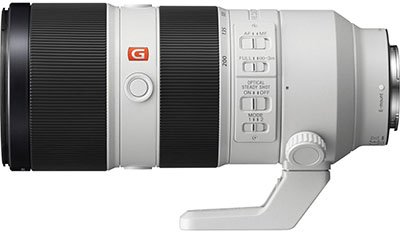
The Sony FE 70-200mm F2.8 GM OSS lens has a maximum focus range of 200mm, so your subject will need to be reasonably close if you want them to fill the frame. However, with a constant wide-open aperture of f/2.8, this is a great lens to use in low light situations or when you want the smoothest bokeh.
The lens is sharp across the frame even when wide-open at f/2.8. It’s well built and despite its heavy weight (1480g) it handles well on the Sony a7R III body. The autofocus is extremely fast and it will rarely miss the shot.
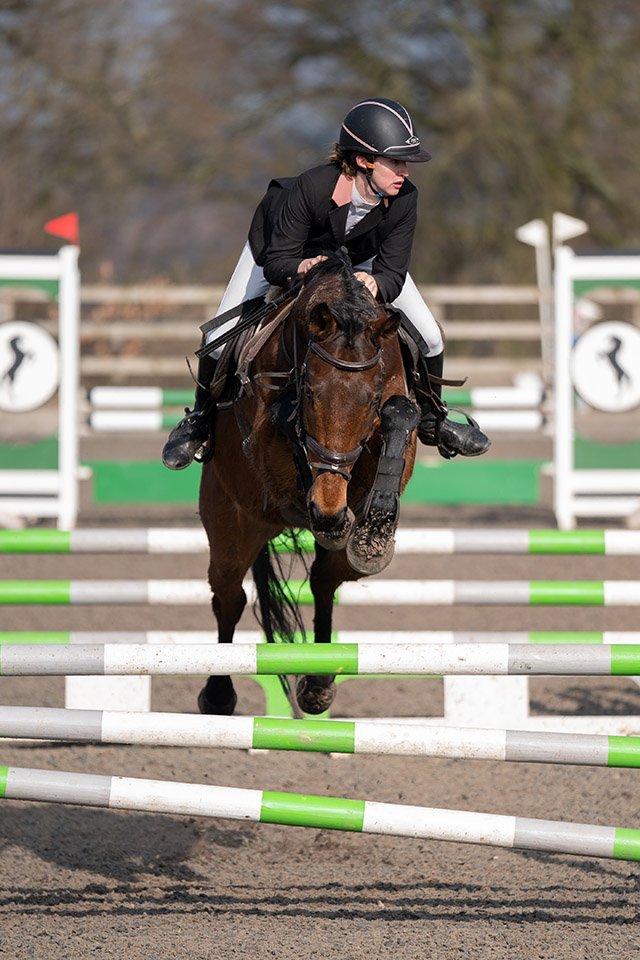
Sony FE 70-200mm F2.8 GM (Shot on a9) @ 200mm | 1/1000 | f/2.8 | ISO 100 | Cropped | Exposure Correction in LR | ** Full Resolution SOOC Download: JPEG | RAW

Sony FE 70-200mm F2.8 GM (Shot on a9) @ 200mm | 1/1600 | f/2.8 | ISO 500 | ** Full Resolution SOOC Download: JPEG | RAW
This lens is also compatible with the Sony FE 1.4x and 2.0x teleconverters helping to extend its reach up to 280mm with the 1.4x and up to 400mm with the 2x.
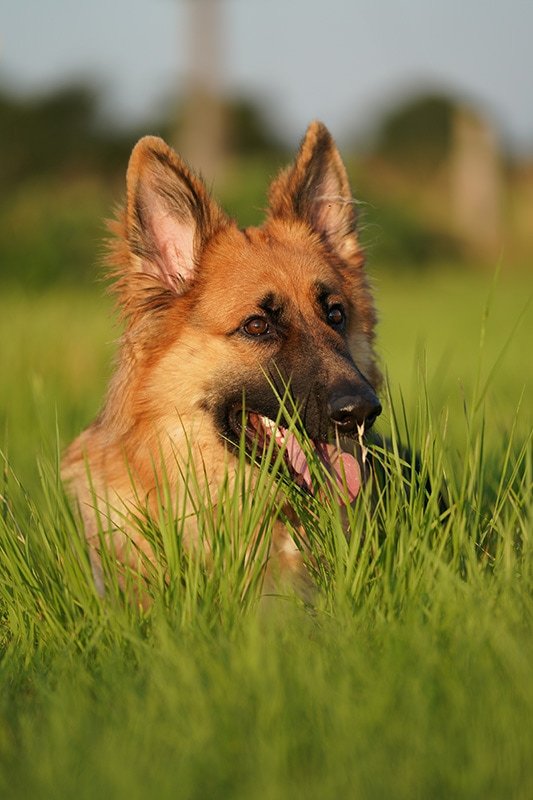
Sony FE 70-200mm F2.8 GM (Shot on a9) @ 165mm | 1/2000 | f/2.8 | ISO 200 | ** Full Resolution SOOC Download: JPEG
I own this lens myself and often reach for it when shooting not only wildlife at a close distance, but also motocross, equestrian events, rally and pet portraits.
Pros: Very sharp, excellent color rendition, extremely fast autofocus, creamy bokeh
Cons: Expensive, heavy
Recommended Reviews: Nick Smyth (Youtube) | DxOMark
Sample Photos: Flickr
Minimum Focusing Distance: 0.96 m (3.15 ft)
Minimum Aperture: f/22
Maximum Aperture: f/2.8
Aperture Blades: 11 circular
Auto Focus: Yes
Stabilization: Yes
Filter Thread Size: 77 mm
Length: 200 mm
Diameter: 88.0 mm
Weight: 1480 g (3.26 lbs) without tripod mount
Sony FE 70-200mm F4 G OSS (SEL70200G) Lens

If the GM version or the 70-200mm is a little too expensive then you should definitely consider its baby brother the f/4 G version. With a constant aperture of f/4, you will still get some very pleasing bokeh and a lens that works well in low light situations. This lens is not only crazy sharp across the frame, but it’s also extremely well built and delivers beautiful images in a very lightweight package.
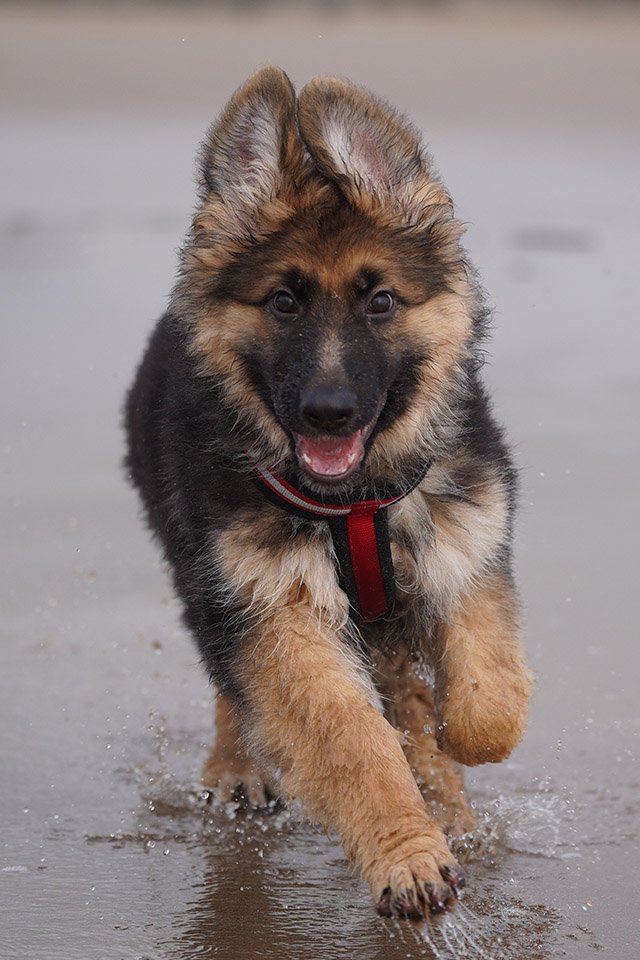
It had no trouble nailing this shot of my dog Frank on his first trip to the beach at 12 weeks of age.
Sony FE 70-200mm F4 G (Shot on a7III) @ 113mm | 1/1600 | f/4 | ISO 500 | Cropped | ** Full Resolution SOOC Download: JPEG | RAW
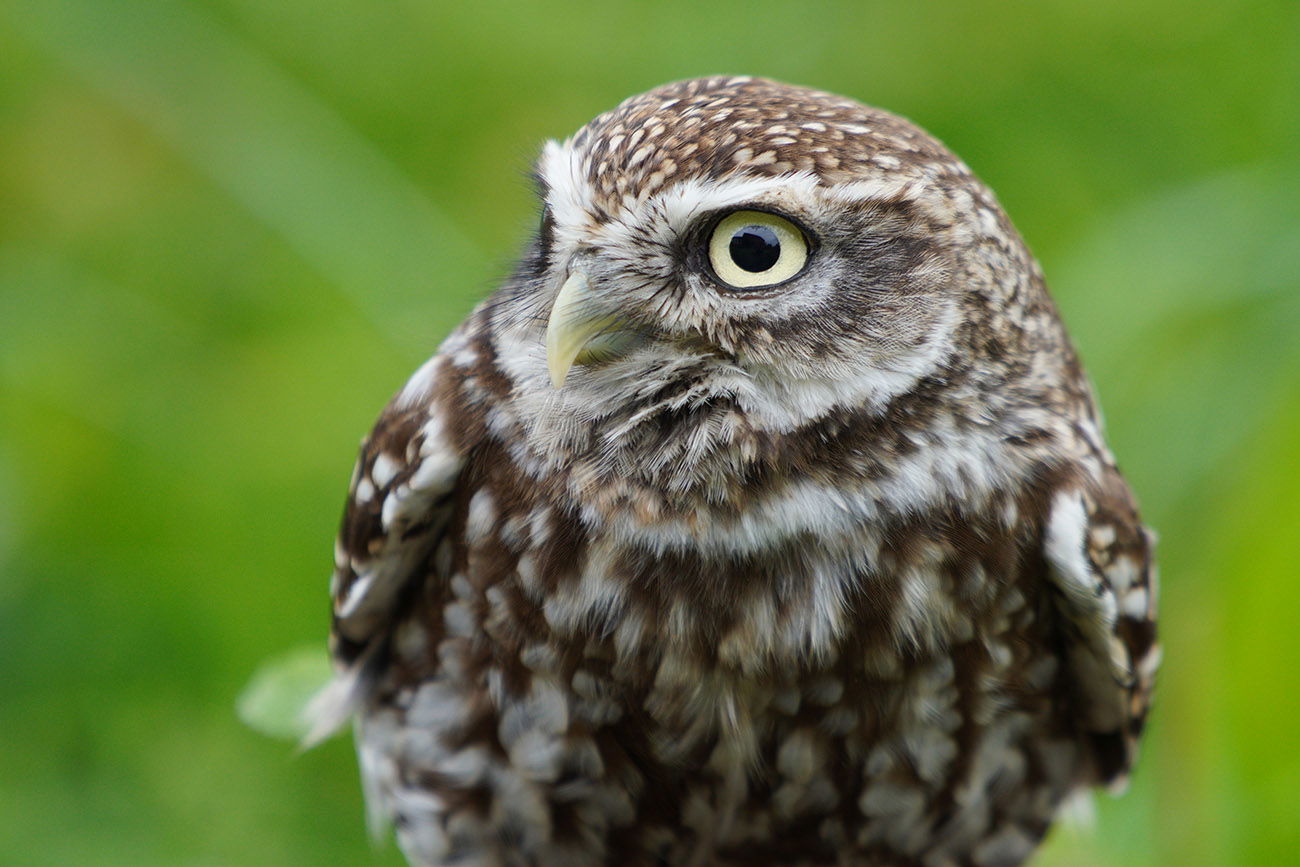
Sony FE 70-200mm F4 (Shot on a6400) @ 200mm | 1/200 | f/4 | ISO 320 | Cropped | Full Resolution SOOC Download: JPEG | RAW **
The lens has optical stabilization built in and also a mode 1/2 switch for panning shots. Autofocus is almost as fast as the GM version so you will have no trouble nailing tack sharp action shots. I own this lens myself as well as the GM version, and will often take the f/4 version with me when I want to travel as light as possible.
Pros: Build quality, sharpness, bokeh, weight, price
Cons: A little corner softness wide-open, vignetting
Recommended Reviews: Phillip Reeve | Matt Granger
Sample Photos: Flickr
Minimum Focusing Distance: 1 m (3.28 ft)
Minimum Aperture: f/22
Maximum Aperture: f/4
Aperture Blades: 9 circular
Auto Focus: Yes
Stabilization: Yes
Filter Thread Size: 72 mm
Length: 175 mm
Diameter: 80 mm
Weight: 840 g (3.26 lbs) without tripod mount
Tamron 70-180mm F2.8 Di III VXD
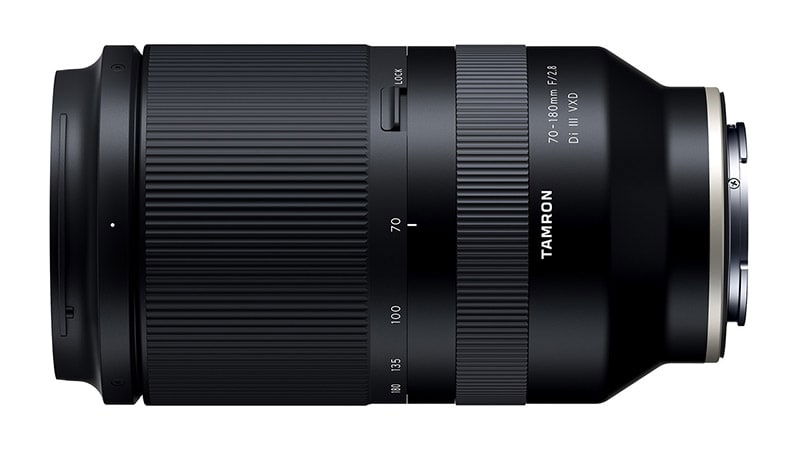
The Tamron 70-180mm f2. 8 Di III VXD has not long been released.
I have purchased it myself so will be adding my own views here shortly.
In the meantime for a closer look at this lens the following review from Dan Watson is worth watching:
Here’s a sample image of Frank for now.

Tamron 70-180mm F2.8 (Shot on a7III) @ 154mm | 1/4000 | f/2.8 | ISO 250 | ** Full Resolution SOOC Download: JPEG | RAW
Pros:
Cons:
Recommended Reviews: Dan Watson (Youtube) | Camera Labs
Sample Photos: Flickr
Minimum Aperture: f/22
Maximum Aperture: f/2.8
Aperture Blades: 9
Minimum Focusing Distance: 0.85m (Full zoom range) MF: 0.27m (WIDE), 0.85m (TELE)
Auto Focus: Yes
Stabilization: No (Can use IBIS in camera)
Filter Thread Size: 67 mm
Length: 149 mm
Diameter: 81 mm
Weight: 810 g (28.57 oz.)
Sony FE 70-300mm F4.5-5.6 G OSS (SEL70300G) Lens
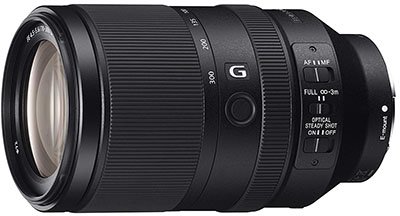
If you want a little extra reach then the Sony FE 70-300mm F4.5-5.6 G OSS lens is one of the lenses that you might want to consider. This is a variable aperture lens which goes from F4.5-F5.6 and the lens body also extends when you zoom. Autofocus is very quick and it produces very sharp images in the center of the frame wide open, however corner softness could be better especially when wide-open.
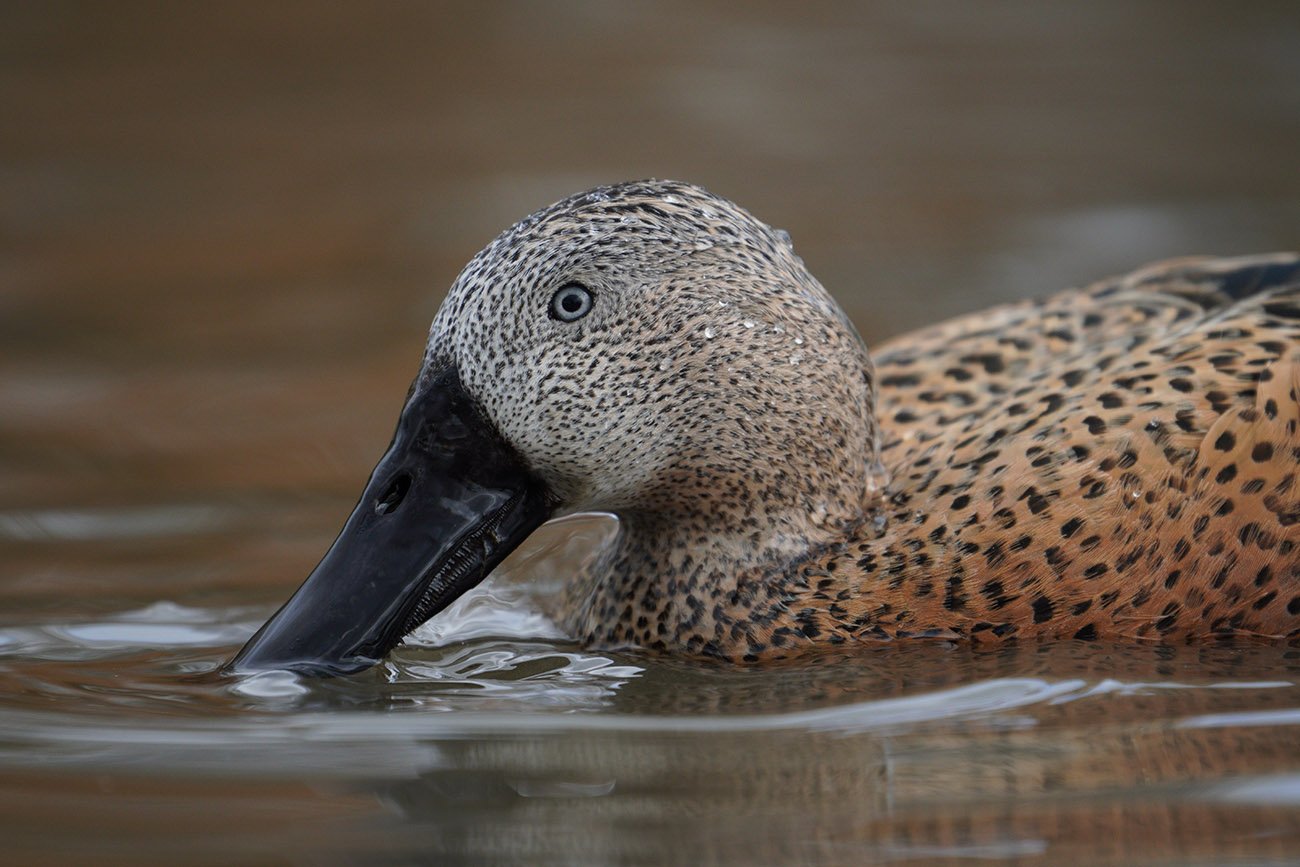
Sony FE 70-300mm (Shot on a6400) @ 300mm | 1/1000 | f/5.6 | ISO 500 | ** Full Resolution SOOC Download: JPEG | RAW
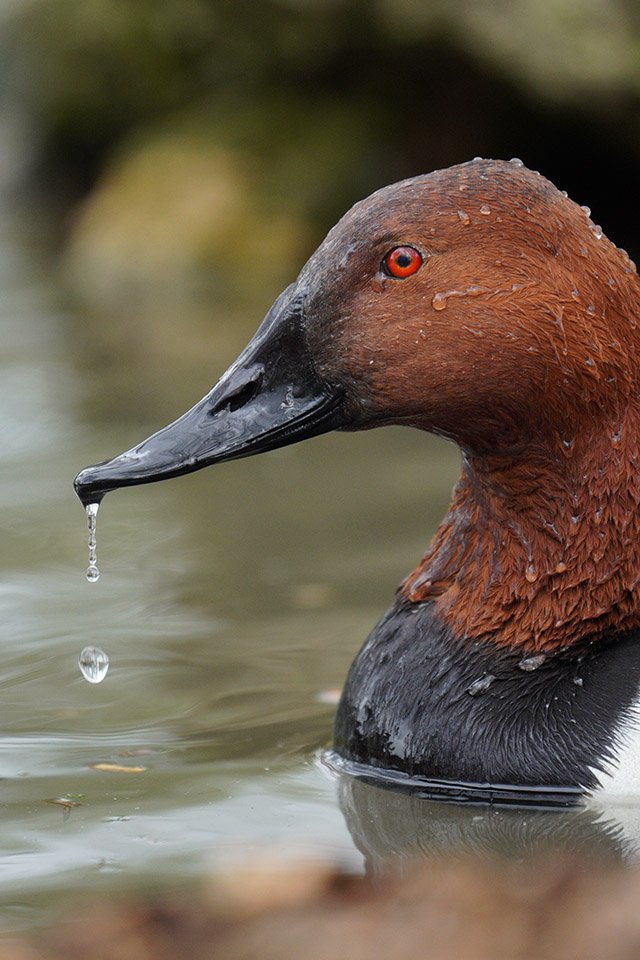
Sony FE 70-300mm (Shot on a6400) @ 300mm | 1/1000 | f/5.6 | ISO 1250 | ** Full Resolution SOOC Download: JPEG | RAW
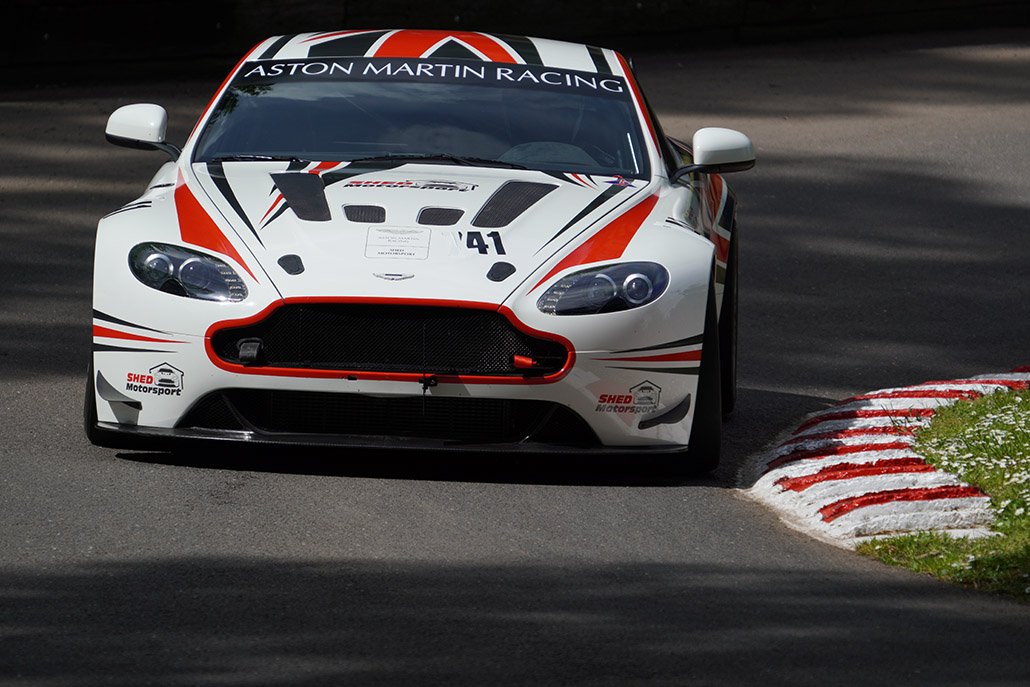
Sony FE 70-300mm (Shot on a6400) @ 210mm | 1/1250 | f/5.6 | ISO 100 | ** Full Resolution SOOC Download: JPEG | RAW **
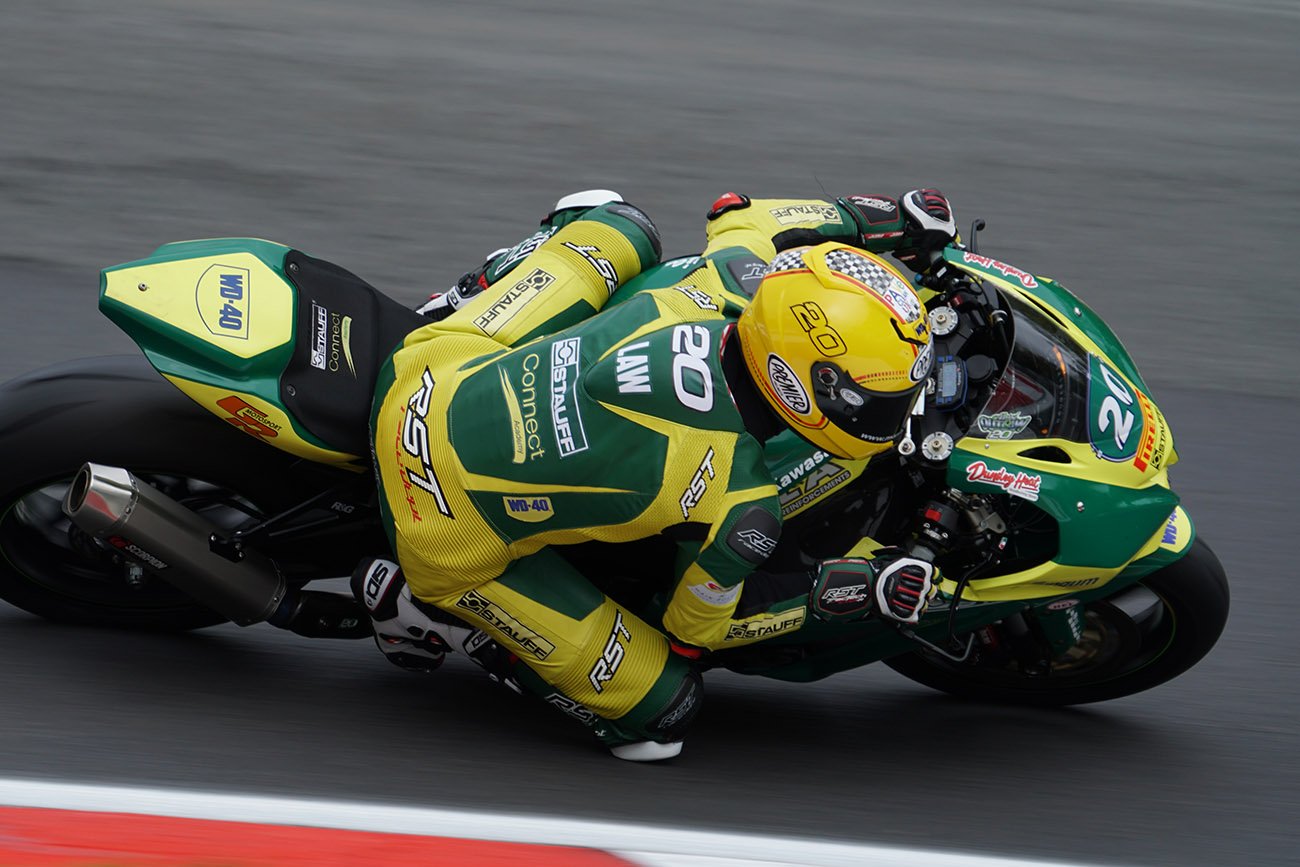
Sony FE 70-300mm (Shot on a6500) @ 196mm | 1/250 | f/5.6 | ISO 160 | Cropped (I don’t provide full res images for superbike shots I’m afraid)
Build quality is very good and unlike both of the 70-200mm lenses this lens does not feature the white coating so it is much less discrete if you care about this. At 854g this lens weighs just a few grams more than the 70-200mm F4 lens which features a tripod collar, sadly the 70-300mm has no tripod collar which I find to be a very odd omission.
I own this lens myself and have enjoyed shooting a range of wildlife and motorsports with it. However, since picking up the FE 100-400 GM this lens is just collecting dust and I will probably be selling it just as soon as I have written a review.
Pros: Center sharpness, fast autofocus, build quality
Cons: No tripod collar, corner softness wide-open
Recommended Reviews: John Sison (YouTube) | Imaging Resource
Sample Photos: Flickr
Minimum Focusing Distance: 0.9 m (2.96 ft)
Minimum Aperture: f/22-29
Maximum Aperture: f/4.5-5.6
Aperture Blades: 9 circular
Auto Focus: Yes
Stabilization: Yes
Filter Thread Size: 72 mm
Length: 143.5 mm
Diameter: 84 mm
Weight: 854 g (1.88 lbs)
Sony FE F4.5-5.6 100-400mm G Master (SEL100400GM) Lens

If you are looking for the best native 100-400mm zoom lens for shooting wildlife (my Borneo adventure), sports and action, then look no further than the Sony FE 100-400mm f/4.5-5.6 GM OSS lens. I’ve owned this lens since it was released and it has rarely been off my camera since.
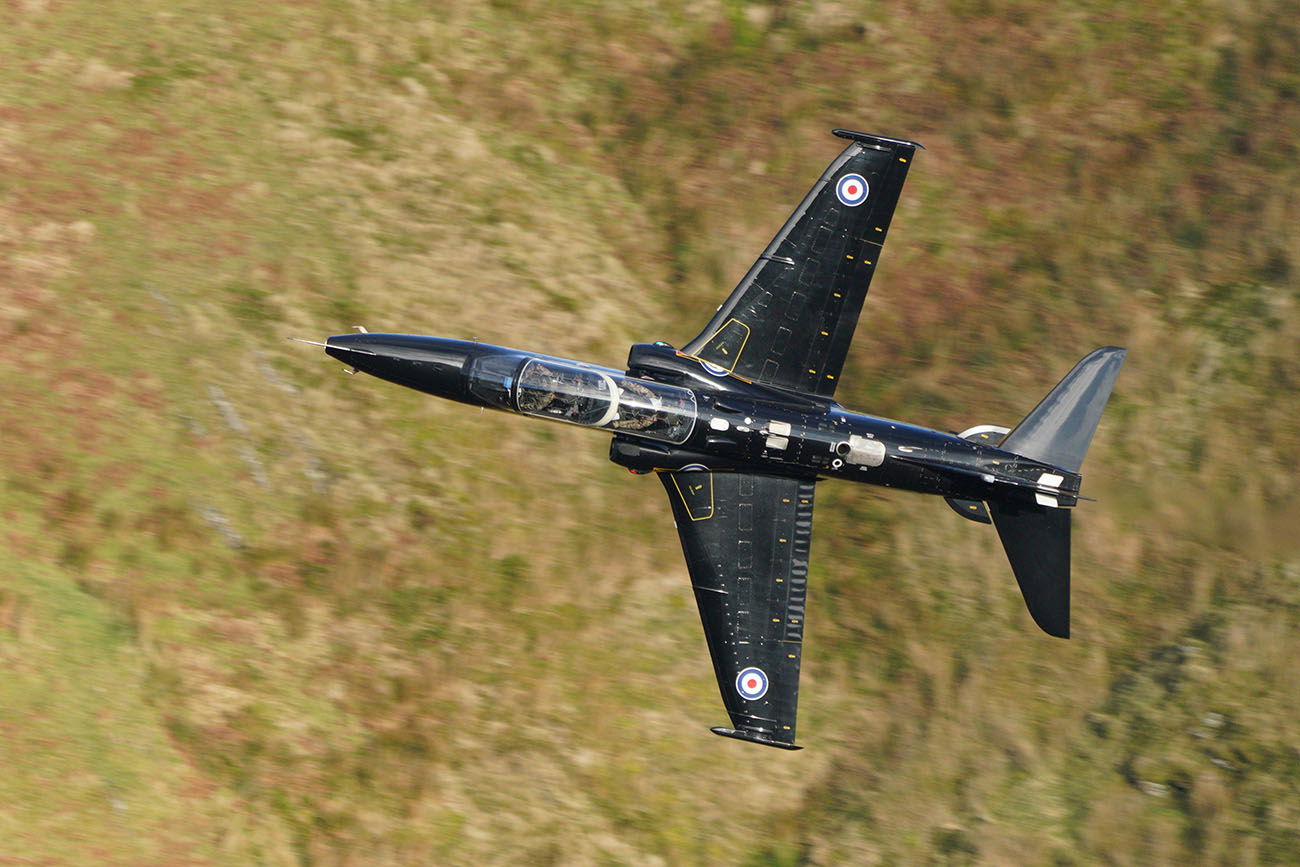
a7R III @ 400mm | 1/1000 | f/5.6 | ISO 500 | Cropped | *Full Resolution Download: JPEG | RAW
The lens has a variable aperture of F4.5-5.6, an extremely fast and silent autofocus motor, and the build quality would make some Ferrari’s blush. The lens is also weather sealed against dust and moisture so you won’t need to pull out your plastic bag when the rain comes down.
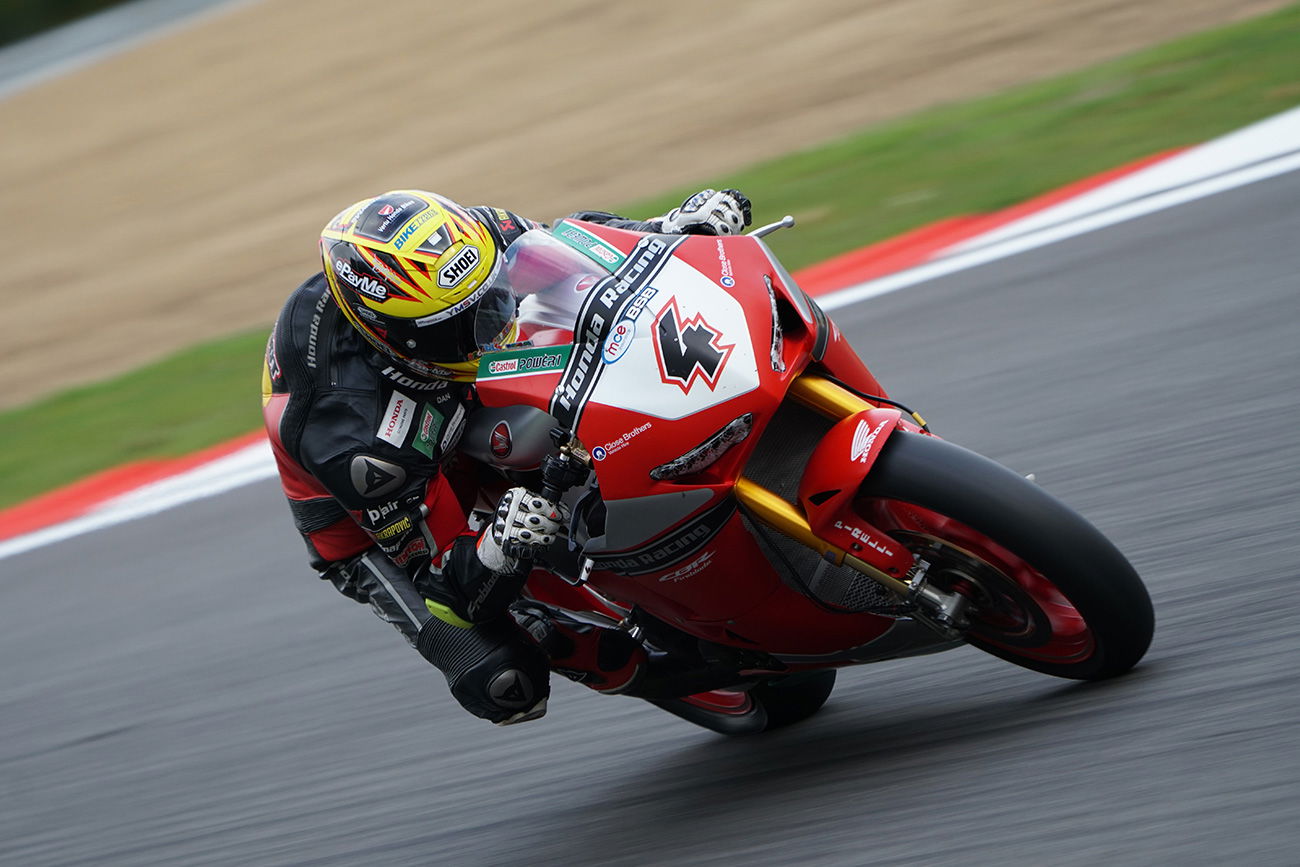
a6500 + 100-400 GM @ 345mm | 1/250 | f/5.6 | ISO 400 (I don’t provide full res images for superbike shots I’m afraid)
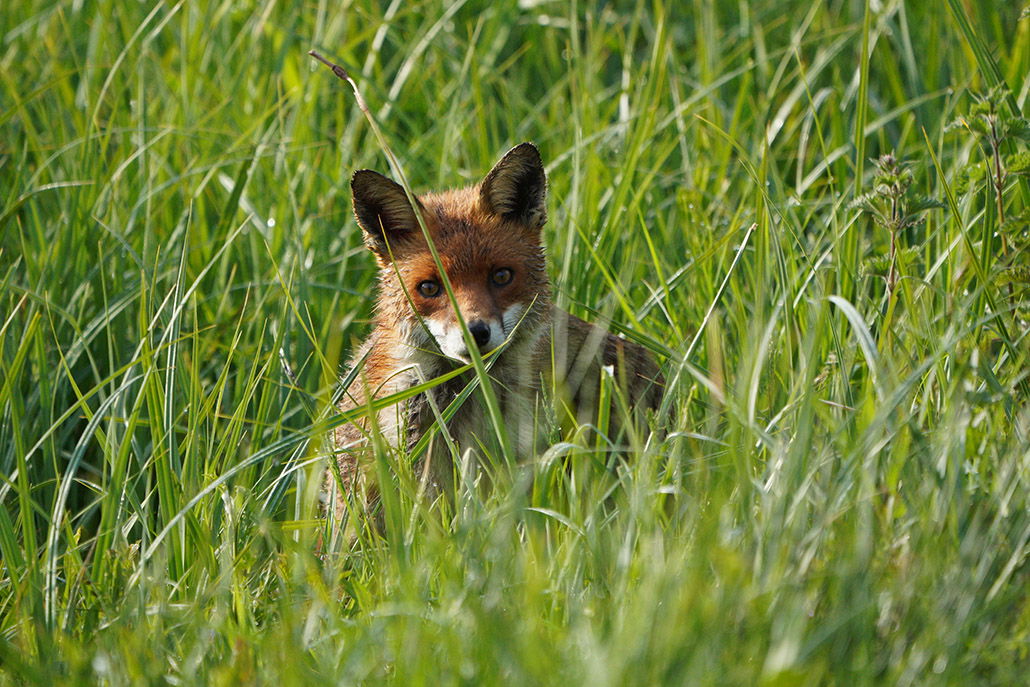
Sony a6400 + 100-400mm GM @ 400mm | 1/1250 | f/5.6 | ISO 800 | Full Resolution SOOC Download: JPEG
Sharpness across the frame needs to be seen to be believed and DxOMark rate this as the sharpest lens in the 100-400mm focal range.
The lens is also compatible with the Sony FE 1.4x and 2.0x teleconverters, helping to extend its reach up to 560mm with the 1.4x and up to 800mm with the 2x. However, I’d recommend only using it with the 1.4x since with the 2x your aperture is pushed to f/11 which slows the AF speed and you’ll also find that the images produced are a little on the soft side.
If you can afford this lens then please don’t waste your time considering any other alternatives as you will not be disappointed with it, I certainly haven’t been.
Pros: Fast autofocus, very sharp across the frame, color rendition, bokeh, build quality
Cons: Price
Recommended Reviews: My Review | DxOMark
Sample Photos: My Review Samples
Minimum Focusing Distance: 0.98 m (3.22 ft)
Minimum Aperture: f/32-40
Maximum Aperture: f/4.5-5.6
Aperture Blades: 9 circular
Auto Focus: Yes
Stabilization: Yes
Filter Thread Size: 77 mm
Length: 205 mm
Diameter: 93.9 mm
Weight: 1395 g (3.1 lbs) without tripod mount
Sony FE 200-600mm F5.6-6.3 G OSS (SEL200600G) Lens

Since I enjoy shooting wildlife myself I ordered this lens as soon as it was announced and put together a 200-600 vs 100-400 comparison.
With a focal range of 200-600mm and a maximum aperture of f/6.3 at 600mm this lens will help you to get closer to wildlife than ever before. If 600mm is not long enough then you can also add the 1.4x or 2.0x teleconverters that will take you to 900mm and 1200mm.
However, adding the 1.4x teleconverter means you lose one stop of light and this takes you to f/9, the 2x teleconverter drops 2 stops of light and takes you to f/13. On the a7R III you lose the faster phase detection at f/9 and above, the camera instead defaults to the slower contrast detection. Also at f/9 and above if you are shooting continuous bursts the a7R III will only lock focus on to the first shot of the series.
This is a big lens and it weighs 2115g without tripod mount and is 318mm in length. It’s also an internal focusing lens and the short zoom throw makes going from 200mm to 600mm a breeze. Because it doesn’t extend it also balances very well on a gimbal.
At 600mm this lens is sharper than the Sony FE 100-400 + 1.4x is at 560mm. At 400mm this lens is also a touch sharper than the 100-400 which considering it’s a G lens and not a GM lens is really quite something.
Here are a couple of sample shots:

Sony a7 III + 200-600 @ 600mm | 1/1000 | f/6.3 | ISO 640 | Full Resolution SOOC Download: JPEG | RAW **

Sony a7III + 200-600 @ 600mm | 1/2000 | f/6.3 | ISO 640 | Cropped | Full Resolution SOOC Download: JPEG
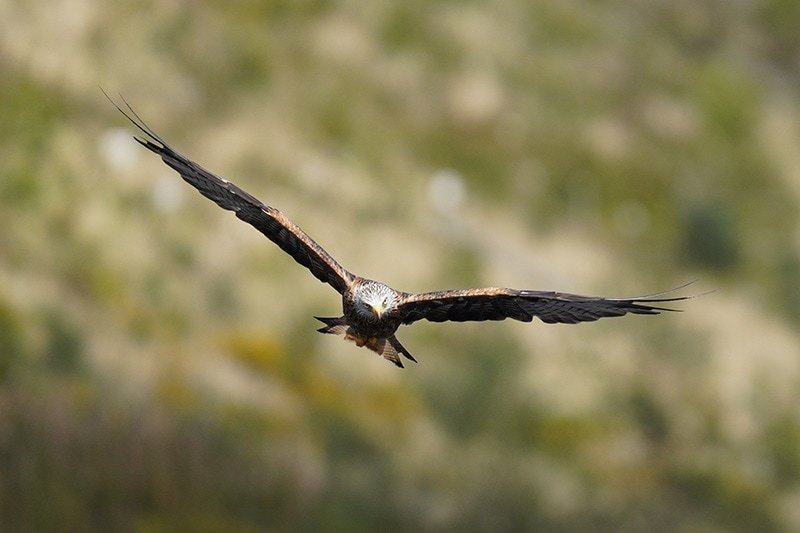
Sony a7III + 200-600 @ 600mm | 1/2000 | f/6.3 | ISO 800 | Cropped | Full Resolution SOOC Download: JPEG | RAW **
Pros: Internal zoom, sharpness, 1.4x & 2.0x teleconverter compatibility
Cons: Size, weight
Recommended Reviews: Mark Smith (YouTube)
Sample Photos: My Sample Gallery
Minimum Focusing Distance: 2.4m (7.88 ft)
Minimum Aperture: 32-36
Maximum Aperture: 5.6-6.3
Aperture Blades: 11 circular
Auto Focus: Yes
Stabilization: Yes
Filter Thread Size: 95mm
Length: 318 mm (12 5/8 in.)
Diameter: 111.5 mm (4 1/2 in.)
Weight: 2115g without tripod mount
Sigma 100-400mm F5-6.3 DG DN OS
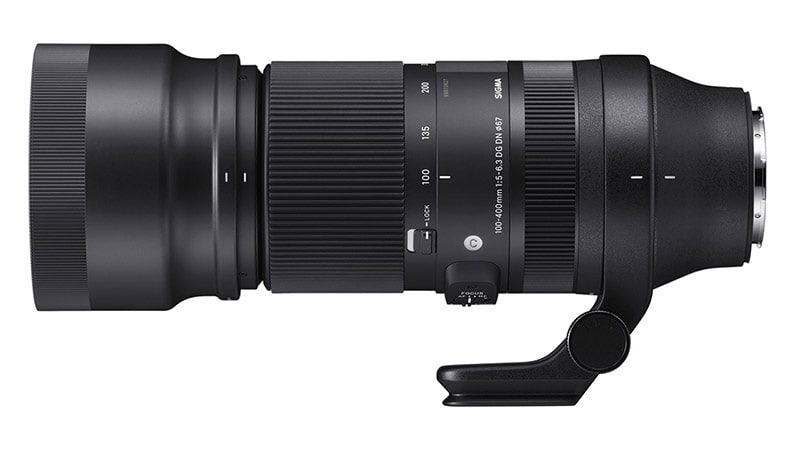
The Sigma 100-400mm F5-6.3 DG DN OS has not long been released, as soon as reliable information is known about this lens this section will be updated.
I have purchased this lens myself and the image quality is very good and extremely close to the Sony FE 100-400 lens.
Unfortunately the autofocus performance is not on par with the Sony. It misses more shots and if you are shooting bursts with AF-C priority set to balanced emphasis it struggles sometimes to lock-on and fire the shutter.
I will be doing a full review and comparison with the Sony FE 100-400 GM lens very soon.
Until then this first look video from Gordon Laing is worth watching:
Pros:
Cons:
Recommended Reviews:
Sample Photos: Sigma Gallery
Lens Construction: 22 elements in 16 groups
Angle of View (35mm): 24.4° – 6.2°
Aperture Blades: 9 rounded
Minimum Aperture: f/22-29
Maximum Aperture: f/5
Minimum Focusing Distance: 112 (Wide) – 160cm (Tele) / 44.1 – 63in.
Maximum Magnification Ratio: 1:4.1 (400mm)
Auto Focus: Yes
Stabilization: Yes
Filter Thread Size: 67mm
Length: 199.2mm / 7.8in.
Diameter: 86mm / 3.4in.
Weight: 1,140g / 40.2oz.
Website: Sigma 100-400mm F5-6.3 DG DN OS
Sony FE 400mm F2.8 GM OSS (SEL400F28GM) Lens

If money is not an issue then the Sony FE 400mm F2.8 GM OSS lens already has your name on it. This is the most expensive E-mount lens that you can currently buy and it is most definitely my dream lens.
I’ve not yet used this lens myself, but I know from Alpha Shooters who have that it is extremely sharp across the frame, has the fastest autofocus performance of any Sony lens, and weighs in at only 2895g which is very light for a 400mm f/2.8 lens and makes handling it on the Sony 7iii, a9 or whichever camera you decide to pair it with a dream.
The only real negative thing about this lens is the price. At $11,998.00 in the US or £10,499.00 in the UK, this lens will leave a very noticeable hole in your bank account.
Pros: Lightening fast autofocus, low light performance, sharpness, weight, handling
Cons: Very expensive
Recommended Reviews: Mark Galer (YouTube)
Sample Photos: Flickr
Minimum Focusing Distance: 2.7 m (8.86 ft)
Minimum Aperture: f/22
Maximum Aperture: f/2.8
Aperture Blades: 11 circular
Auto Focus: Yes
Stabilization: Yes
Filter Thread Size: 40.5 mm (slot-in)
Length: 359 mm
Diameter: 158.1 mm
Weight: 2895 g (6.38 lbs)
Sony FE 600mm F4 GM OSS (SEL600F40GM) Lens
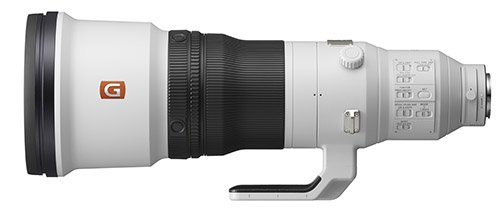
The Sony FE 600mm F4 GM OSS lens is one of my dream lenses.
If money is no object and your other half doesn’t check your bank statements then this really is the ultimate lens for wildlife shooters.
This lens is sharp, very sharp, and the autofocus motors have absolutely no trouble in locking on and tracking your subject be it a bald eagle or kingfisher.
The lens also supports Sony’s 1.4x and 2x teleconverters that take it to 900mm and 1200mm.
To learn more about this lens I’d recommend watching the following review from Mark Smith:
Pros: Extremely sharp, fast autofocus, weight
Cons: Cost
Recommended Reviews: Mark Smith (YouTube)
Sample Photos: DPReview
Minimum Focusing Distance: 4.5 m (14.8 ft)
Minimum Aperture: 22
Maximum Aperture: 4
Aperture Blades: 11 circular
Auto Focus: Yes
Stabilization: Yes
Filter Thread Size: 40.5 (slot-in)
Length: 449 mm (17-3/4 in.)
Diameter: 163.6 mm (6-1/2 in.)
Weight: 3040 g (107.3 oz.)
Sony 1.4x Teleconverter Lens (SEL14TC)
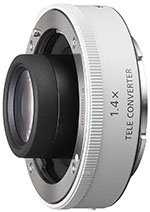
The Sony 1.4x teleconverter (SEL14TC) is currently only compatible with the Sony FE 70-200mm F2.8 GM, the Sony 100-400mm F4.5-5.6 GM, and the Sony FE 400mm F2.8 GM lenses. It will not physically fit any other Sony E-mount lenses.
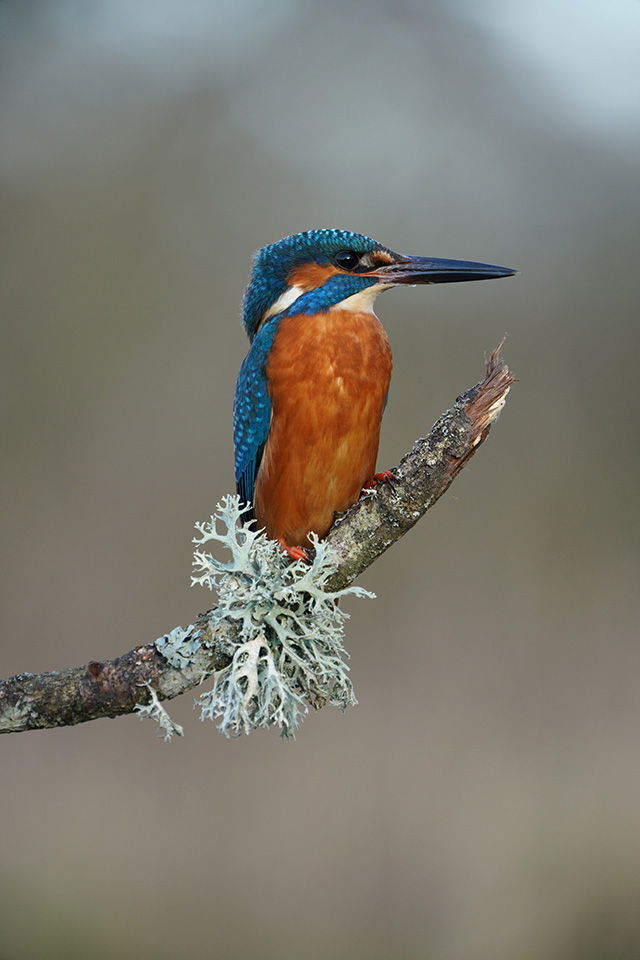
a7R III + 100-400 GM + 1.4x @ 560mm | 1/200 | f/8 | ISO 800 | *Full Resolution Download: JPEG | RAW
The 1.4x will extend the reach of the 70-200mm GM lens to 280mm and the 100-400mm GM and 400mm GM lenses to 560mm on a full frame camera like the a7R III, but it will do so by sacrificing one stop of light. Fortunately this does not slow the autofocus speeds of these lenses, however you will notice increased vignetting in the corners wide-open and also a little more software in the images.
I own the 1.4x myself and use it quite often on both my 70-200 GM and 100-400 GM lenses.
Pros: Extends focal reach by 1.4x, autofocus speed, size and weight
Cons: Price
Recommended Reviews: Danny Eusebio (YouTube)
Sample Photos: Flickr
Length: 33.6 mm
Diameter: 62.4 mm
Weight: 167 g (0.37 lbs)
Sony 2x Teleconverter Lens (SEL20TC)

The Sony 2x teleconverter (SEL20TC) is currently only compatible with the Sony FE 70-200mm F2.8 GM, the Sony 100-400mm F4.5-5.6 GM, the Sony 200-600mm F5.6-6.3 G, the Sony FE 400mm F2.8 GM and the Sony FE 600mm F4 GM lenses. It will not physically fit any other Sony E-mount lenses.
Pros: Extends focal reach by 2x, size and weight
Cons: Price
Recommended Reviews:
Sample Photos:
Length: 62.4 mm
Diameter: 42.7 mm
Weight: 207 g (0.46 lbs)
Street Lenses
There is a great deal of debate among photographers as to which is the best lens for street photography. Should I use a 35mm or 55mm for shooting in the streets? Opinions are divided and as with everything it often comes down to a matter of personal taste and the type of image that you want to create.
However, one thing that most street photographers will agree on is that wide-angle lenses below 35mm are generally more difficult to use for street. If you are shooting people with a lens under 35mm then you will literally need to be in their face to get the photo. That said, some street shooters like to use a 24mm to allow them to include more of the surrounding environment in their photo.
Here are some of the best street photography lenses for the Sony a7R III and the Sony full-frame E-mount system of mirrorless cameras:
Sony Sonnar T* FE 35mm F2.8 ZA (SEL35F28Z) Lens
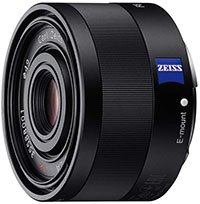
The Sony Sonnar T* FE 35mm F2.8 ZA is a small beautiful lens that really excels at environmental portraiture and street photography.
This 35mm f/2.8 lens is very sharp even when wide-open at f/2.8, bokeh is very pleasing and distortion is very well controlled. However due to its small size vignetting is a problem even when stopped down, so this will need to be corrected in post.
If you are looking for a small, discrete lens for street photography, then this lens would be a very good choice.
Pros: Very sharp at f/2.8, bokeh, size and weight
Cons: Vignetting, price
Recommended Reviews: Brian Smith (YouTube) | Richard Wong
Sample Photos: Flickr
Minimum Focusing Distance: 0.35 m (1.15 ft)
Minimum Aperture: f/22
Maximum Aperture: f/2.8
Aperture Blades: 7 circular
Auto Focus: Yes
Stabilization: No (But you can use IBIS on the a7R III)
Filter Thread Size: 49 mm
Length: 36.5mm
Diameter: 61.5 mm
Weight: 120 g (0.26 lbs)
Sony Distagon T* FE 35mm F1.4 ZA (SEL35F14Z) Lens

The Sony Distagon T* FE 35mm F1.4 ZA is a big beautiful lens that really excels at environmental portraiture and street photography (if you don’t mind the size).
The 35mm f/1.4 is very sharp at f/1.4 and tack sharp to the corners when stopped down, while featuring the signature Zeiss color and contrast. There is a little distortion and some longitudinal CA and fringing, but these are easily fixed in post.
Pros: Very well built, lovely bokeh, very sharp wide open, CA well controlled, fast autofocus
Cons: large and heavy, expensive
Recommended Reviews: Steve Huff | Jordan Steele
Sample Photos: Flickr
Minimum Focusing Distance: 0.3 m (0.98 ft)
Minimum Aperture: f/16
Maximum Aperture: f/1.4
Aperture Blades: 9 circular
Auto Focus: Yes
Stabilization: No (But you can use IBIS on the a7R III)
Filter Thread Size: 72 mm
Length: 112.0 mm
Diameter: 78.5 mm
Weight: 630 g (1.39 lbs)
Sony FE 55mm F1.8 ZA (SEL55F18Z) Lens

The Sony Sonnar T* FE 55mm f/1.8 ZA lens is a very versatile lens that creates a different look versus a 24mm or 35mm because of its narrower field of view.
It’s an excellent lens for street photography providing you don’t mind its size. The lens is exceptionally sharp wide open and the bokeh is nice and smooth, but it does exhibit some onion rings as well as the cat-eye effect towards the edges of the frame.
Pros: Very sharp across the frame, excellent build quality, fast and silent autofocus
Cons: Vignetting, cat-eye bokeh balls and onion rings
Recommended Reviews: Rose and Charles | Phillip Reeve
Sample Photos: Flickr
Minimum Focusing Distance: 0.5 m (1.64 ft)
Minimum Aperture: f/22
Maximum Aperture: f/1.8
Aperture Blades: 9 circular
Auto Focus: Yes
Stabilization: No (But you can use IBIS on the a7R III)
Filter Thread Size: 49 mm
Length: 70.5 mm
Diameter: 64.4 mm
Weight: 281g (0.62 lbs)
Astrophotography Lenses
If you want to capture images of the sky at night then you will want a lens that works well for low light photography. Some of the most important characteristics of a good lens for astrophotography are a wide maximum aperture like f/1.4, but the lens should also be sharp at this wide-open aperture and offer decent corner resolution and coma correction. Low vignetting is important to, as is the ability to focus manually since autofocus is out of the question at night.
Wide-angle lenses make good choices for astrophotography because they have a larger field of view (FOV). This allows you to capture much more in one shot, such as the Milky Way and also some foreground interest. Also the wider the angle of your lens the longer you will be able to expose for before star trails become a concern.
Here are some of the best astrophotography lenses for the Sony a7R III and the Sony full-frame E-mount system of mirrorless cameras:
Sony FE 24mm F1.4 GM (SEL24F14GM) Lens

As you will have probably noticed that this lens has found its way into 3 different categories. It’s not only a great lens for landscape, interior, and environmental portrait photography, but with its wide-open aperture of f/1.4 it also excels at astrophotography.
Astrophotographer Alyn Wallace has described this lens has potentially the best lens ever made for astrophotography, which really is quite a statement. See the link to his review below.
The lens is extremely well built, weather sealed against dust and moisture and weighs in at only 445g. On the lens itself you will find a focus hold button that can be customized, an AF on/off switch, an aperture selection ring and a click on/off switch for the aperture ring.
This lens is extremely sharp across the frame even when wide open at its maximum aperture of f/1.4. Distortion is well controlled as is the coma making this a great lens for astro photography. The bokeh is silky smooth and possibly the best of all the current 24mm f/1.4 lenses available. Autofocus is fast, quiet and super accurate, not that this is so important for astrophotographers. I own this lens myself and absolutely love it. I’ll be writing a review for it just as soon as I get a little free time.
Pros: Very sharp across the frame wide open, beautiful bokeh, size & weight, aperture ring, fast autofocus
Cons: Strong vignetting wide open, flare resistance
Recommended Reviews: Alyn Wallace (YouTube) | Gary Hart | Phillip Reeve
Sample Photos: Flickr
Minimum Focusing Distance: 0.24 m (0.79 ft)
Minimum Aperture: f/16
Maximum Aperture: f/1.4
Aperture Blades: 11 circular
Auto Focus: Yes
Stabilization: No (But you can use IBIS on the a7R III)
Filter Thread Size: 67 mm
Length: 92.4 mm with lens cap
Diameter: 75.4 mm
Weight: 445 g (0.98 lbs)
Sony FE 16-35mm F2.8 GM (SEL1635GM) Lens

The Sony FE 16-35mm f/2.8 GM with very little coma and distortion is a great lens for astrophotography. This certainly isn’t a lightweight lens though as it weighs in at a hefty 680g. Thankfully the build quality is excellent and it’s weather sealed against dust and moisture. The 11 circular aperture blades delivers ultra-smooth bokeh, focusing is fast and silent, and the sharpness is excellent across the frame. I own this lens myself and it very rarely leaves my gear bag.
Pros: Excellent sharpness across the frame, beautiful sunstars, very little coma and distortion, well controlled chromatic aberration
Cons: Weight, price
Recommended Reviews: Our Review
Sample Photos: Flickr
Minimum Focusing Distance: 0.28 m (0.92 ft)
Minimum Aperture: f/22
Maximum Aperture: f/2.8
Aperture Blades: 11 circular
Auto Focus: Yes
Stabilization: No (But you can use IBIS on the a7R III)
Filter Thread Size: 82 mm
Length: 121.6 mm
Diameter: 88.5 mm
Weight: 680 g (1.50 lbs)
Laowa 12mm 2.8 Zero-D Lens

The Laowa 12mm 2.8 Zero-D lens for Sony E-mount is one of the widest prime lenses available that offers almost zero distortion. Unfortunately wide open the coma performance isn’t that great even when stopping down to f/5.6, so you will need to work on this a little in post. However, currently there is no other 12mm lens available for Sony E-mount with a maximum aperture f/2.8, which is why I’ve included it here.
Pros: Excellent sharpness wide-open, distortion, build quality
Cons: Coma
Recommended Reviews: Bastian Kratzke
Sample Photos: Flickr
Minimum Focusing Distance: 0.18 m (0.59 ft)
Minimum Aperture: f/22
Maximum Aperture: f/2.8
Aperture Blades: 7 circular
Auto Focus: No
Stabilization: No (But you can use IBIS on the a7R III)
Filter Thread Size: N/A. Requires Laowa 100mm Filter Holder
Length: 83 mm
Diameter: 75 mm
Weight: 609 g (1.34 lbs)
Price Check & Buyer Reviews for Laowa 12mm 2.8 Zero-D
At: Amazon | B&H Photo | Venus Lens
Sigma 14mm 1.8 DG HSM Art Lens
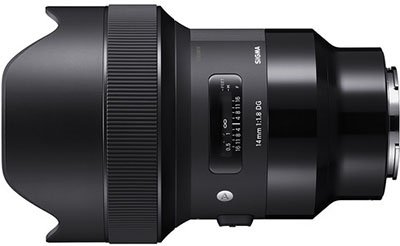
Without doubt, the Sigma 14mm f/1.8 Art is one of the best ultra-wide angle lenses ever made to this date. This lens has been available in both Canon, Nikon and Sigma mounts for some time, but now Sigma has adapted this lens for Sony E-mount. So you are basically getting an SLR designed lens with an adapter bolted on, this means that it does retain its considerable size and weight.
However, despite the rather crude form of adapting this lens to Sony E-mount, this can easily be forgiven since the Sigma 14mm f/1.8 Art produces exceptionally detailed images with very little distortion and chromatic aberration.
This lens does show signs of coma from f/1.8 to f/2.5 and you might even see traces of coma at f/2.8 if you have very bright stars at the edges of the frame. However, coma is still not as prominent as on many other wide-angle lenses, and also you are unlikely to have very bright stars at the edge of the frame, so I still think it’s a very good choice for astro shooters.
Pros: Extremely sharp, very well built
Cons: Size and weight, coma frame edges
Recommended Reviews: Alyn Wallace (Canon Mount) | DPReview (Nikon Mount)
Sample Photos: Flickr
Minimum Focusing Distance: 0.27 m (0.89 ft)
Minimum Aperture: f/16
Maximum Aperture: f/1.8
Aperture Blades: 9 circular
Auto Focus: Yes
Stabilization: No (But you can use IBIS on the a7R III)
Filter Thread Size: N/A
Length: 126 mm
Diameter: 95.4 mm
Weight: 1170 g (2.57 lb)
Before You Go
Whichever lens you go for I’d recommend updating both the lens and camera to the latest firmware version, as new firmware releases often address compatibility issues and improve autofocus performance with some lenses.
Do you already own any of these lenses for your Sony a7R III? If you do, I’d love to hear your thoughts in the comments below. Or have I missed any lenses that you think should be included? Again, please do let me know in the comments below.
If you are on Facebook then I’d love for you to join one of the many Sony Alpha Shooters groups that I run. There are groups for Sony Alpha landscape, portrait, sports, wildlife, weddings, macro, street, and video shooters, as well as a generic group for everything else Alpha. You can find all of the links here. The groups are a great place to post your shots with your brand new lens!
Please note that this guide does not include every single full-frame E-mount lens on the market, just a collection of the best lenses that I recommend for the a7R III based on reviews from Alpha Shooters around the globe as well as my own experience.






Wonderful article, great effort! May I ask if it is correct that you excluded the 200-600 G lens from the lens list that is compatible with the 1.4x TC? I noticed your comment on the 200-600 G did say it takes a 1.4x TC, so if not the Sony one, which one?
Thank you Grant. The 1.4x is compatible with the a7R III and the 200-600, however, when adding the 1.4x teleconverter you lose one stop of light and this takes you to f/9, the 2x drops 2 stops of light and takes you to f/13. On the a7R III you lose the faster phase detection at f/9 and above, the camera instead defaults to the slower contrast detection. Also at f/9 and above if you are shooting continuous bursts the a7R III will only lock focus on to the first shot of the series. So you’ll want to keep this in mind. I’ve updated the article to make this clear. All the best, Tim